Top 150 Albums of the 2010s
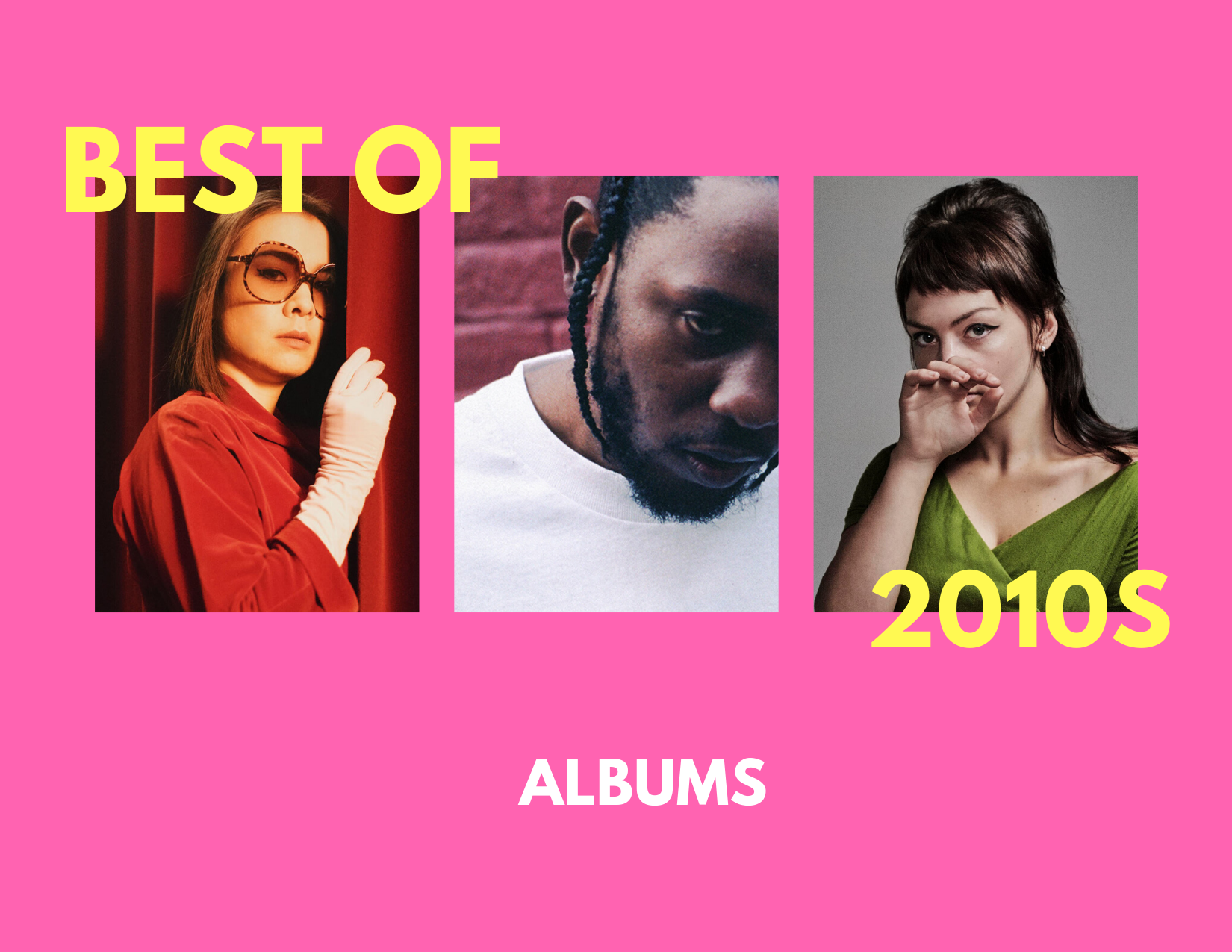
Trying to summarize a decade’s worth of music is complicated. To do so is to set an arbitrary limit somewhere—we stopped at 150 albums, but it could have been more. We didn’t exclusively include American or English albums, but they do comprise a significant majority. We tried to encompass as many genres as possible, but we won’t even begin to describe our efforts as exhaustive. And while we tried to divide up the albums evenly between years, there’s no doubt that some are represented better than others (2019 has the smallest presence—it’s always hard to evaluate a year in context when it just ended a few days ago). Maybe it’s a futile effort to try to summarize something that’s too broad and abstract to fit into one cohesive list. But we did it anyway.
First, here’s the why: Much like we do at the end of every year, we took a moment to take stock of where we are now, at the end of the decade rather than while we’re experiencing it. It’s an opportunity to see if our tastes have changed, to see what music ended up having the most significant influence both on us and on other music, and to take a look at what made the most ripples, and did so in a way that kept our attention. This wasn’t an effort simply to repost our top 15 albums of every year to have a neat, extensive summary, but rather to see what changed, what endured, and what left an impression well after the fact.
Now, here’s the how: Everybody who contributed to this list made their own personal list of favorites. We voted, tallied, then took a look at where everything shook out. Then we asked ourselves some questions: What’s overrepresented? What’s underrepresented? What’s missing? Could we perhaps swap out a problematic album for one made by The Deftones? Things like that. Then we each suggested a handful of albums that were worth consideration but maybe didn’t get as many votes. Some albums got moved around, some were bumped, some were dropped, and everything ended up being marbled for a more interesting reading (and if you’re following along, listening) experience.
What we ended up with is a list of albums that we stand behind, that we’re still extremely enthusiastic about 3, 5, or 10 years later. (Or in some cases, just a couple months.) Part of what made the past couple decades of music interesting is that the idea of canon was turned on its head, though it does appear that since so many best-of-decade lists have been published, maybe that’s not true anymore. But we can say that we were true to our own perspective, both in the albums we chose and what we had to say about them. We hope you discover some albums that might have passed you by the first time. We hope our list sparks some discussion. We hope you enjoy reading it most of all. Here are our Top 150 Albums of the 2010s.
***
Buy these albums at Turntable Lab
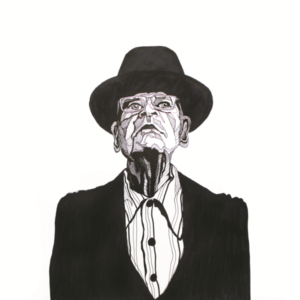
150. Pile – Dripping (2012)
The best way to talk about Dripping is to talk about Krill’s Pile-referencing EP. “Did you hear the latest Pile album?/Not a stinker on it” begins the opening title track “Steve Hears Pile in Malden and Bursts into Tears.” Seeing Pile for the first time at Sunnyvale in 2017 was overwhelming—their cultish fanbase shows the fuck up, and their high-octane performances are nothing short of transcendent. Not only are Pile good, they’re so good they’ll make you feel bad, sometimes worthless. (“If I could have made something good I would have by now.”) On top of that, they’re one of the hardest working bands of the 2010s; there’s been an estimated 25 trips in the past decade (“I emailed Rick/said ‘do you want to play with us some time?’/he emailed me back/said ‘man our summer’s looking pretty busy.’”) If you’ve been sleeping on Pile, now’s your chance to dig in, and Dripping is the perfect hook. – Patrick Pilch

149. Kali Uchis – Isolation (2018)
Don’t let the title fool you: Isolation’s guest list includes wildly talented collaborators like Thundercat, Kevin Parker and Tyler, The Creator, but make no mistake that Kali Uchis’ debut is her show. She handles genres like a child with balls of Play-Doh, creating familiar shapes (reggaeton duet “Nuestro Planeta”, soul throwback “Feel Like a Fool”) and mashing them together into new colors and sounds (“Your Teeth in My Neck”, “Dead to Me”). Albums of this quality are rarely effortless—“Nothing good ever comes easy,” Uchis coos on late-album highlight “After the Storm”—but then again, calling Isolation merely “good” hardly does it justice. – Jacob Nierenberg

148. Elza Soares – A Mulher do Fim do Mundo (2016)
As artists like Scott Walker and Gil Scott-Heron have demonstrated, radical late-career reinvention is not only possible but potentially limitless given the right material and collaborators. In her late ’70s, Brazilian legend Elza Soares proved likewise on a set of songs that revealed a harsher, sharper and more experimental aspect to her samba legacy. As much Gang of Four as Gilberto, as much Beefheart as Ben, A Mulher do Fim do Mundo is some of the most radically inventive—not just reinventive—music of any country in the past decade, let alone Brazil. A Mulher do Fim do Mundo which translates to “a woman at the end of the world,” seemingly warning of the coming storm of global chaos while broadcasting the voice of a woman standing triumphant in the prime of her strangest and most thrilling act. – Jeff Terich
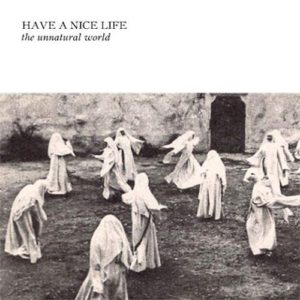
147. Have A Nice Life – The Unnatural World (2014)
Deathconsciousness, Have A Nice Life’s first and apocalyptically mythic album, not only found its audience through the internet but has, like so many albums that present themselves as cultural currency, replicated in equal parts earnestness and meme. Without getting too much further into cultural mimesis, it’s hard to follow up a work like this. But HANL’s second LP The Unnatural World ultimately is more polished, immediate, direct and still deafeningly dark. “Cropsey” the crown jewel of The Unnatural World begins with, “A sign/That I’ve been praying for/A solemn augur, pure and true/To tell me what to do/A true/God that I can settle for/And spin my body in a long, slow arc/Like how my problems are.” This sort of lyrical conceit is found throughout, along with a focus on ambient sounds moving toward shorter tracks distilled with even stronger verses and choruses. The Unnatural World is an act of separation, brilliantly rendered from the fat of Deathconsciousness into a focused work full of lyrical epiphanies. May it find a new generation of listeners. – Brian Roesler

146. Elder – Lore (2015)
Lore is a marathon of an album, packing five tracks into 59 minutes, featuring ideas that could have yielded four times as many songs. Yet Massachusetts journeymen Elder are all about stretching a composition to its farthest reaches, finding out where the idea of stoner metal, prog or simply rock ‘n’ roll will go when unbound by the strictures of format. Sometimes it’s moments of giddy shred (“Compendium”) or emotional grandeur (“Legend”) or unexpected beauty (“Spirit at Aphelion”). But if its greatest accomplishment was proving the sheer thrill of hearing a trio of musicians play the hell out of their instruments, then that would still make it one of rock music’s greatest triumphs of the past ten years. – Jeff Terich

145. Young Fathers – Dead (2014)
The Scottish hip-hop group scored the Mercury Prize for their disorienting debut album, but its unsettling sketch of back-burning refugees still feels under-appreciated. Dead is a morality play that confronts escapism and aggression in equal measure, with its narrators examining the incredible tension of having feet in both camps. Young Fathers have the same disdain for liberal hypocrisy (“LOW”) as mindless genocide (“JUST ANOTHER BULLET”, “WAR”), and resent the prospect of being dragged into living out the conflict themselves (“DIP,” “PAYING”). There’s plenty of despair on Dead, but you can’t say it’s unearned or, sadly, unrealistic. – Paul Pearson
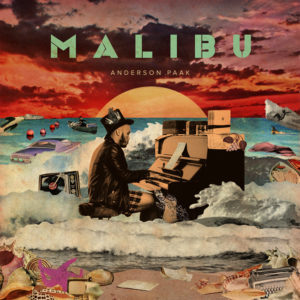
144. Anderson .Paak – Malibu (2016)
For Malibu, every day is summertime. Anderson .Paak’s debut full-length record is a rare display that makes even the rainiest or coldest days seem like sunny afternoons on Cali beaches. Malibu radiates a warm, sandy glow from the opening notes of “The Bird” to the triumphant close of “The Dreamer.” .Paak’s surf swells with R&B smoothness, quick-fire rap staccato, and a collection of guest appearances that showcases why Dr. Dre and others were so eager to bring him into the studio. – Cody Davis
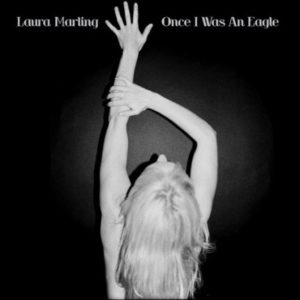
143. Laura Marling – Once I Was An Eagle (2013)
Laura Marling’s work nails the duality of an open emotional traveler who nonetheless doesn’t have a lot of time for callow bullshit. It’s a character most of us need in our lives, and Marling’s fourth album showed all its potential. The first half belies the stereotypes of folk naïveté with wearied censure (“You Know,” “Master Hunter”), but its second half finds Marling fighting to put her acquired knowledge to effective use (“Where Do I Go?”, “Saved These Words”). A welcome Terrence Malick exploration in a decade of Marvel Universe outbursts. – Paul Pearson
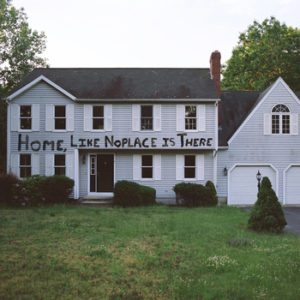
142. The Hotelier – Home, Like Noplace is There (2014)
This record, the second from The Hotelier, is a funny one in that it provides catharsis for the listener with its surging hooks but resists easy resolution in its lyrics, which center on interpersonal failings, on friends lost and funerals missed. Noplace is animated by despair, by the feeling of wanting to have done better but knowing it’s too late; songwriter Christian Holden’s vocals soar into his upper register until they tear to shreds, striving for notes he can’t reach and people he can’t talk to anymore. Its last song ends with a reprise of its first, like they’re saying, sure, grief is cyclical, and it’s a hard cycle to escape. But there’s comfort in the sound. – Ben Dickerson

141. Idles – Joy As An Act of Resistance (2018)
In an overwhelming world of conformity and pressure to assimilate, Bristol post-punks Idles form a makeshift club of acceptance on Joy As an Act of Resistance. The album is an honest look at society and the patterns that are harder to confront and break. While employing the tools of hard, heavy rock, the band navigates their way through pain and suffering and the confusion of modern day life. On “June,” Joe Talbot narrates the extreme pain he felt after his daughter was stillborn. Talbot offers a hand to grieving parents, letting them know they’re still parents, and they’re never alone, while “Danny Nedelko” is a raucous anthem for treating others with kindness, specifically immigrants. Frontman Joseph Talbot put it best when he said, “This album is an attempt to be vulnerable to our audience and to encourage vulnerability; a brave naked smile in this shitty new world.” – Virginia Croft
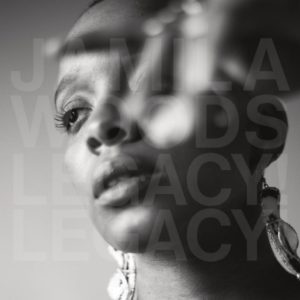
140. Jamila Woods – LEGACY! LEGACY! (2019)
The list of boldfaced first names on the tracklist of Jamila Woods’ second album is long enough to be printed on a Snuggie-length Okayplayer ampersand tee. Well, they’re almost all first names—Woods wisely went with “Sun Ra” instead of “Herman,” though that’s hardly the point. The Chicago songwriter spends four sides of funk, blues, house and spacey R&B communicating with 12 artists legendary to the point of not requiring last names. More than simply revering them, though, she humanizes them, delivering intimate portraits through the kinds of details only a poet could hone in on with such grace and poignancy. – Jeff Terich
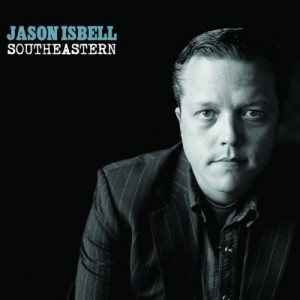
139. Jason Isbell – Southeastern (2013)
It is, broadly speaking, a good thing that country music has received the critical appraisal from certain corners that it has in the 2010s. For too long we suffered the tedious statement “everything but rap and country” and when the former was finally accepted by people who should have embraced it all along, the latter still mouldered in ignominy. Jason Isbell’s work, be it with the Drive-By Truckers, the 400 Unit or here as a solo record (albeit featuring 400 Unit players), are a massive reason why this turn began to fully shift and this record in specific can be pointed at as pivotal in that shift. Wall to wall, these are perfect songs, from the tender “Cover Me Up” to the hummable but devastating “Relatively Easy,” perfect songs bolstered by astute and literary lyrics married to immaculate melodies. The playing also deserves special note, possessing a grit that is often missing from pop country sound engineering. Isbell’s approach to country feels most informed by folk music, both in terms of narrative storytelling and in the way he constructs his melodic phrases and the chord choices he employs, keeping things artful without tipping the scales toward arthouse music. Southeastern is a record that feels just as at home humming from the busted speaker of a bar jukebox as it does burbling out from a hi-fi stereo or piped into AirPods, providing that necessary universalism of great country music while not sacrificing the painful and provocative specific and granular narratives of folk. Southeastern also marks the beginning of what is, as of the time of this writing, an unbroken streak of brilliant records. There’s been plenty of great country records this decade, but Southeastern is the one, a necessary listen no matter your prior tastes, much the same way Metallica, Dr. Dre and John Coltrane were before him. – Langdon Hickman

138. Julie Byrne – Rooms With Walls and Windows (2014)
Julie Byrne’s songwriting stands at the intersection of the Museum of Natural History, a wraparound porch in the summer, and the River of Styx—the through-line is wonder and inquisitiveness, as Byrne interrogates the natural world, mythology, love, and the mundane, affording equal weight to each. This is lo-fi ambient folk that manages to evoke the cobwebs connecting old heirlooms and attic walls while still sounding fully vibrant, alive, and present. At times, it almost sounds like a live record, the guitar tones and the faint echoes creating a palpable haze, an atmosphere that hangs and shimmers in the air. – Tyler Dunston

137. The Armed – Only Love (2018)
A Detroit hardcore band with a rotating cast of collaborators and a roving freak in a Ghillie suit, The Armed—self-appointed Greatest Band in the World—defy stereotypes, common sense, even logic itself. Their second album Only Love was released free for download in 2018 and met with as much loud, vocal WTF as sheer, giddy excitement, which is the proper combination of reactions, if the proper ratio is up for debate. With a sound that can only be described as punk rock sensory overload, The Armed hybridized the mutant squeal of Daughters with the visceral anthems of Fucked Up and landed somewhere inside an uncontrollable pit where logic simply doesn’t apply. There are hooks (“Heavily Lined”), shoegaze-like walls of sound (“Ultraglass”) and even genuine beauty (“Luxury Themes”) marbled with brightly flashing neon, power pills, space invaders and ascii skulls. Resistance is futile. – Jeff Terich
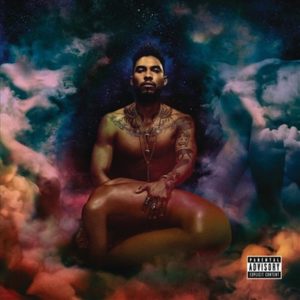
136. Miguel – Wildheart (2015)
Wildheart is, without a doubt, a pro-sex album. Almost every song is literally about sex, contains a metaphor for sex or uses sex as a metaphor for something else. However, Miguel eschews treating sex as the zero-sum game so many red blooded males drool over. Rather, Miguel utilizes psychedelic rock as the beast of burden that carries his spiritually tinged meditations to create a new galaxy where bodies are simply vessels for amorphous spirits and intimate relations are ritual forms of commune. In fact, through the L.A. crooner’s seemingly extraterrestrial eyes, everything about human relations has spiritual value, from the coffee the morning after (“Coffee”) to the infamous Valley that innovated the commodification of sex (“the valley”). Nonetheless, despite the sultry content of the record, throughout Wildheart, Miguel maintains a pretty humble outlook on the process, never bragging about his own stripes. On “Coffee” he watches his sleeping partner and seems to hope she reached orgasm but doesn’t seem fully confident. In a decade where our bloated prudish piety has made all of our primal urges cagey, Wildheart is either too free-spirited for its time or exactly what our time needs. – Paul Glanting

135. Arca – Arca (2017)
Venezuelan-born producer Alejandra Ghersi created a foundation of glitchy electronics early on in the decade that only grew more contorted and alien as their work progressed in the coming years—that they released an album in 2015 called Mutant is neither surprising nor an inaccurate way to describe what it sounds like. After putting their production innovations to work in backing voices like Kanye West and Björk, Arca delivered a grand art-pop album of their own, infusing a uniquely peculiar and psychedelic strain of electronics with genuine melody and emotion, ultimately arriving as a worthy successor to the iconoclastic Icelandic diva. There are moments of tender beauty (“Anoche”), of manic industrial intensity (“Castration”) and at least one certified anthem (“Desafio”), almost every track held together by one unexpected ingredient: Arca’s own aching vocals. – Jeff Terich

134. Actress – R.I.P. (2012)
Actress’ R.I.P. is IDM that ripples with the pulse of techno. The textures are ethereal and at times deliberately artificial, like ringtone noises or email notification sounds. Sometimes the songs feel like collage, part of a larger piece. But others, like “Marble Plexus” or “Tree of Knowledge” are standalone tracks; massive, amorphous works that slither from one state of being to the next. This refusal of categorization is central to how R.I.P. functions: an electronic album that can’t be defined as anything more specific than just that, electronic. – Ben Cohn
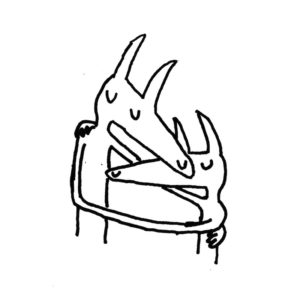
133. Car Seat Headrest – Twin Fantasy (2018)
How do you remake a masterpiece? That was Will Toledo’s challenge when the Car Seat Headrest frontman revisited Twin Fantasy in 2018. The original album, uploaded to Bandcamp in 2011, was practically sacred text for his earliest followers; re-recording it could have been a self-indulgent betrayal akin to George Lucas’ Star Wars revisions. But the updated Twin Fantasy enhanced songs that old fans had adored for years, and introduced them to countless new ones. Toledo’s discography feels like one long goodbye to adolescence—hell, his breakthrough album was named Teens of Denial—but on Twin Fantasy, he all but immortalized teenage heartbreak. – Jacob Nierenberg
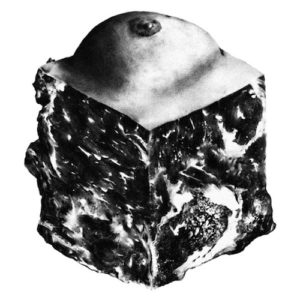
132. Against Me! – Transgender Dysphoria Blues (2014)
Laura Jane Grace was born in the wrong body, ran with the wrong people, and apparently played in the wrong band. Following 2010’s White Crosses, she stepped away from her Against Me! brothers to embrace her gender dysphoria and write a concept album inspired by it. The aftermath of her coming out led to the end of a second marriage and the departure two of her three bandmates, and the studio she built for the record and her fledgling label was swiftly destroyed in a storm. Transgender Dysphoria Blues is a document of difficult matters of visibility, bravery, and personal and societal acceptance that was miserably difficult to complete. Gratefully, it’s also as harsh and unapologetic as their brand of punk ever really got. – Adam Blyweiss

131. Iceage – Beyondless (2018)
Most bands started by teenagers don’t last that long, but the ones that do will almost certainly undergo a metamorphosis as they transition into adulthood. The young, nihilistic hardcore of Iceage at the beginning of the decade was excellent in its own right, but the Danish band only grew more interesting as they grew up. They’re more sophisticated, more ambitious, and on fourth album Beyondless, possessing the kinds of songwriting chops that their early efforts only hinted at. Merging bluesy swagger with a sexy, gothic atmosphere, Beyondless is Iceage’s best and most richly layered album, blood-dripping guitars intertwined with horns and strings, savagery undercut with grace. – Jeff Terich
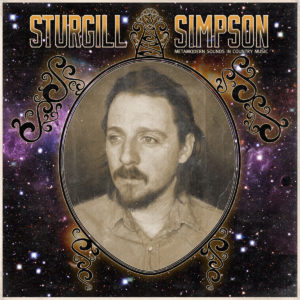
130. Sturgill Simpson – Metamodern Sounds in Country Music (2014)
Country music has always had the potential for great records; sometimes we all just need a reminder. This theme will repeat later on, but Sturgill’s record was among the first that turned heads that thought themselves too good for country back to the good stuff. It did so with a sonic adventurousness that was the honey to underground and art music fans; the impeccable and earthy country music songwriting was the meat that brought everyone back for more. A little sleight of hand can be a good thing. – Langdon Hickman
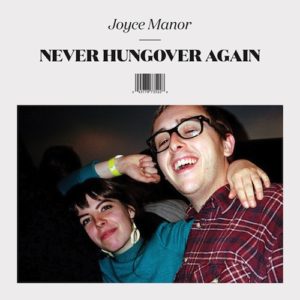
129. Joyce Manor – Never Hungover Again (2014)
This album always sounds like summer to me—maybe in California, or somewhere else where the air is hot and heavy and still. It’s all hooks, all forward motion, with hardly any time for flourishes. Never Hungover Again really catches Joyce Manor dead in the middle of their transition from punk to pop; it’s criminal that these songs are so sing-alongable but mostly end after one verse and one chorus. But, right, summer—the lyrics here are so directly interpersonal (“After finishing a birthday toast, you look at a yearbook, unprepared”), the guitars so charged and shimmering; it’s a true “head out the window on the freeway” punk record. – Ben Dickerson
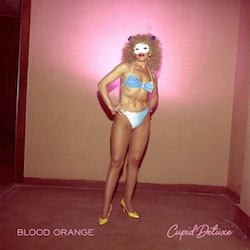
128. Blood Orange – Cupid Deluxe (2013)
Dev Hynes is a collaborative innovator. His natural lean toward teamwork is refreshing, and Cupid Deluxe allowed him to truly show off this strength. Dave Longstreth of Dirty Projectors provides beautiful vocals on “No Right Thing,” his representation of Hynes’ lyrics melding beautifully with the instrumental arrangement. Chairlift’s Caroline Polachek lends a hand on opener “Chamakay,” a groovy rendition of unrequited love, with both Polachek and Hynes’ vocals glorious and entrancing as they join each chorus. Throughout Cupid, Hynes revealed his ability—and reliability—to create diverse, unpredictable tracks with the ability to heal and comfort, whether alone or joined in harmony. – Virginia Croft
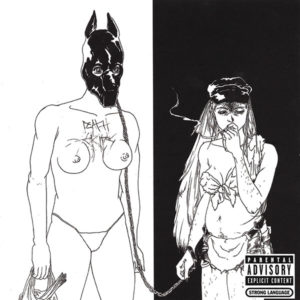
127. Death Grips – The Money Store (2012)
The fact that Death Grips were able to release The Money Store on Epic Records remains one of the strangest, funniest coups of the past decade—matched, of course, by how they got out of that contract. But when compared to the anarchistic, attention-grabbing antics that marked most of Death Grips’ decade, The Money Store feels strangely accessible, sawing the trio’s punk-rap energy down into pop-song molds, complete with glossy production and plenty of hooks. (“Get Got” and “Hacker” are both in contention for catchiest song of the decade for me.) Of course, the music still sounds dangerous—any album with MC Ride at the helm would—but The Money Store stands as the one time where you could sneak Death Grips onto a party playlist and maybe, just maybe, people wouldn’t leave the room in fear. – Sam Prickett
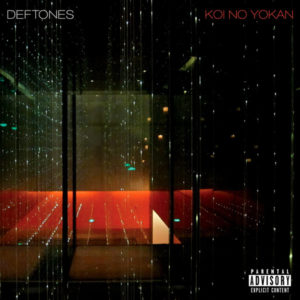
126. Deftones – Koi no yokan (2012)
Thank god for Diamond Eyes triggering the critical and cultural reevaluation of Deftones. It’s hard to believe from this vantage point but, despite the strength of their earlier records, they too once were slotted in the same dustbin as all the worst of nu-metal and radio rock of the ’90s and early 2000s. But while the resolute and unbashful artfulness of Diamond Eyes was what turned heads again and made us wake the fuck up, Koi no yokan is their masterwork of their recent records. Its sense of unified mood and tonal color feels like a novel woven of emotional counterpoint rather than a monotonous drag. The songs contained here are, on their own, simply some of their best, but in album order command a level of emotional power that makes it equal to their mighty White Pony. – Langdon Hickman

125. St. Vincent – St. Vincent (2014)
Nothing’s new about rock artists describing the trickling dehumanization of technology, but St. Vincent’s eponymous fourth album wrestled the subject from lecturing proggers and gave it real-time ambiguity. It helps that Annie Clark’s music—her shimmering, low-fi guitar and mastery of 80s pop sweetness—feels alive. So does her realistic view that the compromise between sentiment and convenience is probably irreversible. “Rattlesnake” bristles with the thrill of sensory awakening; it’s answered immediately with “Birth in Reverse,” in which discovery gets subsumed by the everyday. St. Vincent then charts the human toll in plainspoken but unmistakable terms: the gadfly “Prince Johnny” can’t see past his affected trappings, the “Digital Witness” tries to make ignorance immortal, and Clark only finds reliable value in family (“I Prefer Your Love”), rabid intake (“Bring Me Your Loves”) and the hubris of age (“Severed Crossed Fingers”). – Paul Pearson
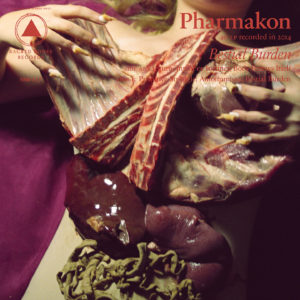
124. Pharmakon – Bestial Burden (2014)
Margaret Chardiet’s distorted death-industrial primal screams most often harbor the grainy shock value of a snuff film, but when she transitioned to body horror on sophomore album Bestial Burden, it wasn’t by her own choice. Chardiet underwent a horrific organ collapse and emergency surgery that found her in a struggle with her own body, hospitalized and surrounded by dying patients. The experience, though far more common and mundane than the supernatural demons of metal, presents her most harrowing and strangely accessible work, an album of real-life horror that translates to approachably creepy industrial drones. Against piercing high-end and what feels like the whir of medical instruments on the incredible title track, Chardiet laments, “I don’t belong here” as if through a drug-induced hallucination. It’s the least clouded in noise she’s ever sounded, and by extension the most terrifying. – Jeff Terich
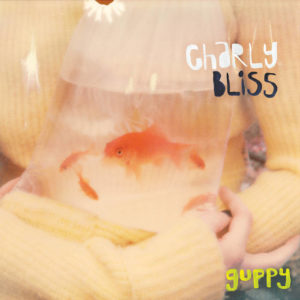
123. Charly Bliss – Guppy (2017)
Last year’s Young Enough offered proof enough that Charly Bliss’ journey is likely to take them somewhere far from where they started, but after one scrapped debut album, a frustrated restart and a lot of patience, they achieved a kind of purity of concept in Guppy. As fun as rock music got in the ’10s, Guppy saw the band frequently contextualized into some kind of Clueless pop-grunge revival. Dated comparison or not, its half-hour of perfect pop gems comprised a dopamine delivery system for some covertly harsh experiences. The catchiest chorus on the album is a pretty brutal realization (“Am I the best? Or just the first person to say yes?“) and the song named after a fast-food emporium (“DQ”) is the one headed toward the most mundanely bleak outcome. There’s also an upbeat and touching song about seeing a therapist (“Ruby”). In its own way, Guppy provides its own kind of cathartic salve—I know I feel better after hearing it. – Jeff Terich

122. Jai Paul – Leak 04-13 (Bait Ones) (2019)
Almost every song on Leak has the caveat (unfinished) after its name. And that’s what these songs sound like: they’re furiously doing too many things at once. But that’s also quintessentially what Jai Paul songs sound like. The thrill is in hearing pop music color outside the lines, make something completely unfocused group, and even unperfected. You can hear this in the grinding bass on “BTSTU” or the jangling drum groove on “STR8 Outta Mumbai.” They’re messy, and that’s what makes them so joyous. – Ben Cohn
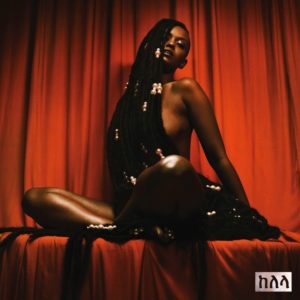
121. Kelela – Take Me Apart (2017)
After Kelela started making waves with her lush, club-infused take on pop and R&B on her first two EPs, expectations grew high for a debut that would reshape the landscape. What makes Take Me Apart such a unique fulfillment of that promise is how it dissects sex and love in a way that is as cerebral as it is physical. The rush of the moment goes hand in hand with the need to pick apart what it might mean. When Kelela sings, “Don’t say you’re in love until you learn to take me apart,” she deftly encapsulates this duality. – Tyler Dunston

120. Titus Andronicus – The Monitor (2010)
I was 15 in 2010 and I hated everyone but I hated myself even more. At points it felt music was the only thing I had, and I hated how much I related to “No Future Part Three.” I hated how the words were like a reflection and I hated Patrick Stickles for writing them. So I hated my U.S. history class until I didn’t, and I hated that Titus Andronicus was probably about an hour away, drinking and pissing in some gutted suburban basement illuminated by cigarettes and shitty string lights. They didn’t even invite me. Fucking losers, they gave me so much hope. For what? Nothing, really. There is no hope—never was, never will be. You can’t run a country on hate. I was a loser; I still am a loser. Fuck, I’ll always will be a loser, and that’s okay. – Patrick Pilch

119. Emeralds – Does It Look Like I’m Here? (2010)
Portland-via-Cleveland drone group Emeralds’ dazzling 2010 album Does It Look Like I’m Here? pulses with an energy sonically affixed to Manuel Gottsching’s landmark 1984 minimalist-techno record E2-E4—synthesized arpeggios are fluidly looped to create mesmerizing—if not entirely disorienting—waves of erupting electronics. Emeralds capitalized on a sound which felt dated and innovative at once—where Gottsching or any of his contemporaries simply landlocked and fell into repetition, Emeralds took the willful leap of expanding beyond that, pushing their compositions into brand new territory—and with that the risk (jump?) clearly paid off. – Timothy Michalik
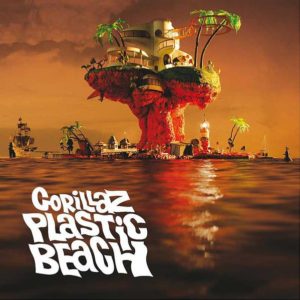
118. Gorillaz – Plastic Beach (2010)
There was little need for Jamie Hewlett’s visuals on the third Gorillaz album, as the musical pictures Damon Albarn’s virtual band and its cast of dozens invented more than made their point. Set on a free-floating landfill, Plastic Beach toned down green politics and focused on the emotional upshot and drainage of disposable culture. Albarn’s form-fitting pop merged seamlessly to turn De La Soul into hucksters (“Superfast Jellyfish”), Mos Def into a compromised motivational speaker (“Stylo,” “Sweepstakes”), Bobby Womack into a sad prophet (“Cloud of Unknowing”), and Albarn himself into a sad, moony romantic (“On Melancholy Hill,” “Broken”). – Paul Pearson
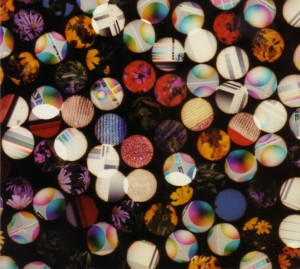
117. Four Tet – There Is Love In You (2010)
Kieran Hebden had spent the 2000s cramming the jazzy, occasionally processed post-rock of bands like Tortoise into laptops and MPC units. At the dawn of the 21st century’s second decade, he used time spent in a British nightclub residency to start transforming his work into the glittering, subtly disruptive dance music we know and adore today. Filled with soulful, stuttering vocals like no Four Tet album before, There is Love in You alternates between the narratives and mantras of proper house. – Adam Blyweiss

116. Nine Inch Nails – Bad Witch (2018)
Age, sobriety and “respectability” (I think Reznor would view it in similar air-quote fashion) didn’t dim the paranoia and pessimism that dominates so much of Nine Inch Nails’ best music, but instead focused it more creatively and meaningfully on our very real, troubled world. Bad Witch concludes an extremely dissonant trilogy of NIN releases made almost entirely by Reznor and Atticus Ross (following Not the Actual Events and ADD VIOLENCE) by grounding much of its compositional structure in free jazz. The resulting chaos is both of a piece with past work under the NIN umbrella—especially madcap rocker “Shit Mirror”—and undeniably ahead of its time, like the album’s terrifying instrumentals and the jazz-industrial fusion of “God Break Down the Door.” Reznor may sing, “You won’t find the answers here, not the ones you’ve been looking for” on that track—but you will find an exciting, challenging album in Bad Witch, courtesy of musicians who refuse to fall into irrelevance. – Liam Green
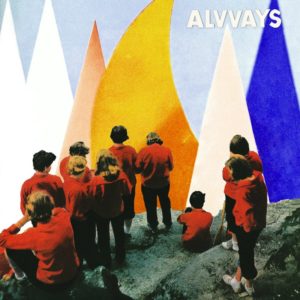
115. Alvvays – Antisocialites (2017)
“What’s left for you and me? / I ask that question rhetorically.” If this sounds like Belle & Sebastian, The Magnetic Fields, or The Smiths, it’s a testament to Alvvays’ knack for a key ingredient in some of the greatest indie pop/rock: lyrics that meld humor and melancholy to such an extent that they become indistinguishable. Add some crystalline, jangly guitar, well-placed synths, Molly Rankin’s skillful phrasing, and an immaculate sense of timing, and you have one of the greatest pop records of the decade. These melodies soar, and they make it look effortless, even as Rankin is steeped in heartbreak. – Tyler Dunston

114. Horrendous – Anareta (2015)
In truth, any of Horrendous’ latest trilogy of records could have been placed here to equal satisfaction, be it Ecdysis or Idol instead. Death metal in general underwent a stellar evolution in this past decade, reclaiming its rightful position as greatest music on the planet and Horrendous was a large part of that shift. They sit somewhere between the gnarly melodicism of Carcass and the approachable prog-death of Death, producing records that marry heavy metal savagery to vast and gargantuan melodicism without an ounce of cheese. Death metal is the best. – Langdon Hickman
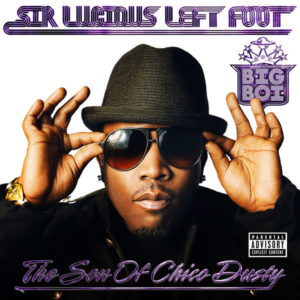
113. Big Boi – Sir Lucious Left Foot: The Son of Chico Dusty (2010)
Big Boi was always seen as the formalist in Outkast, the level-headed wordsmith to Andre 3000’s high-flying idea man. But on Sir Lucious Left Foot, Big Boi proved that he was as full of ridiculous ideas as Andre, and that he could make them work even more consistently. Song after song, Big Boi introduces a silly idea, dares us to wonder if he can pull something good out of it, and then does just that. And yet on tracks like “Daddy Fat Sax” and “Shine Blockas,” he crafts massive, and massively catchy, rap songs that overcome the silliness of their ideas and even their titles. – Ben Cohn
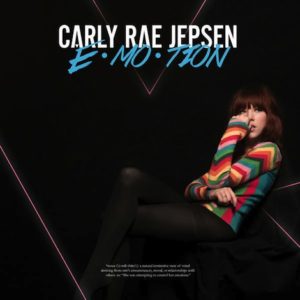
112. Carly Rae Jepsen – E•MO•TION (2015)
Upon reflection, it’s a small wonder that Carly Rae Jepsen’s second album doesn’t fall apart after its opening track—the saxophone-driven widescreen romance anthem “Run Away With Me”— sets expectations so stratospherically high. But E•MO•TION is so carefully crafted to mine a vein of precise emotions: those that fill the spaces between infatuation and love, kiss-off and heartbreak, confusion and clarity. It’s also overstuffed beyond belief with hooks, as “Run Away,” “Making the Most of the Night,” “Gimme Love” and the kaleidoscopic prom-night slow burn of “All That” exemplify. Due to its botched 2015 major-label rollout, the album was not even close to the chart-topping smash it often sounds like it should be. Jepsen’s 2019 follow-up, Dedicated, showed that the songwriting and earnest artistry of E•MO•TION was no fluke, but the latter is already becoming a cult classic: The paranoia thriller series Mr. Robot recently used “Run Away” in a climactic scene, and something tells me that’s the first in a long line of cinematic homages to CRJ. – Liam Green
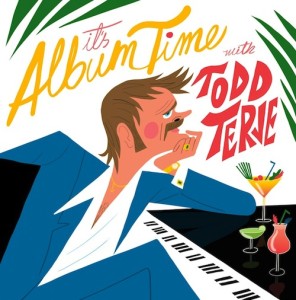
111. Todd Terje – It’s Album Time (2014)
The first half of the decade may have been Daft Punk’s world, but this longtime Norwegian producer refused to live in it. With street cred developed through years of remixes and DJ sets, and playing off of prior collaborations with the likes of Franz Ferdinand and Robbie Williams, he positioned his first LP as a love letter to dance genres and club scenes across Europe. Whether helping Bryan Ferry transform blue-eyed soul into a chillwave love song, blowing bubbles with Balearic on “Inspector Norse,” or giving melody to motorik in “Delorean Dynamite,” Terje is no mere lounge lizard as illustrated on his album art. He’s a chameleon. – Adam Blyweiss

110. Real Estate – Days (2011)
Jangly suburban hypnosis—whether they know it or not, this is Real Estate’s defining aesthetic. The New Jersey quintet burst through the doors of indie-rock at the perfect time: blog rock and colorful, shouty rock was slowly dwindling at the turn of the decade, and room was made for a group of soft-spoken harmonies and loose, expertly intertwined guitar interplay. Their 2011 album Days set a precedent for what was capable in the 21st century with a few clean guitars, dry rhythm sections, and minimal effects—on top of that, with a lineup consisting of indie-mainstays Martin Courtney, Julian Lynch, and Alex Bleeker, Real Estate sailed into the rest of the decade with an instantly recognizable shtick, one that still hasn’t really tired itself out. – Timothy Michalik
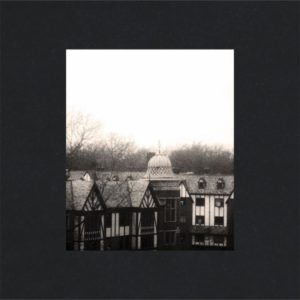
109. Cloud Nothings – Here And Nowhere Else (2014)
The first thing about this record is that it’s the Cloud Nothings album that best balances tunefulness and heaviness. For my money, Dylan Baldi’s best choruses (give or take a “Stay Useless”) are on Here, especially “I’m Not Part of Me,” which’ll stick in your brain like an octopus to drywall. The second is that Jayson Gerycz is the drummer on this record, and he plays the motherfucking drums like he’s accompanying the guitarist on the stage-truck from Mad Max: Fury Road. You either ought to listen to it loudly or scream along so loud that you feel like your voice is part of the record, too. – Ben Dickerson

108. Big Thief – U.F.O.F. (2019)
U.F.O.F. is in the little things. The way Adrienne Lenker’s voice scratches during the chorus of “Orange.” The lyric “where the cattail sways with the lonesome loon.” The droning, heavy washes of guitars during the chorus of “Jenni.” The specificity of these moments, and a thousand others on U.F.O.F., is what makes the record. Every song is full of texture and personal history, thought through down to the smallest detail, adding up to more than their individual worth. – Ben Cohn
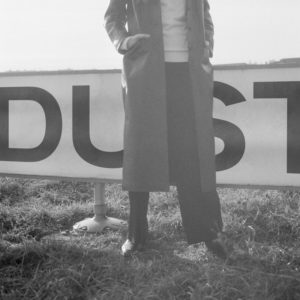
107. Laurel Halo – Dust (2017)
Some of Dust sounds like imitations of pop songs. Some of Dust sounds like imitations of IDM songs. Some of Dust sounds like imitations of nu-jazz songs. Taken as a whole, Dust sounds like nothing else. You can listen to tracks like “Jelly” or “Moontalk” and hear the Afrobeats or R&B that dominate the radio, and the songs almost pass for those genres. But everything is a little out of tune, a little screwy even. None of it quite makes sense. The record unspools from there, becoming more and more oblique the farther you wade in. When it’s over, you awake from a dream state, unsure of what’s just happened. That’s Dust. That’s what Dust sounds like.
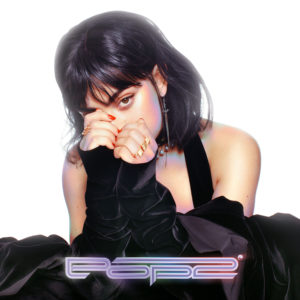
106. Charli XCX – Pop 2 (2017)
Pop 2 is a treatise on the future of pop music. It’s only missing a “.0″ at the end of the name to make that obvious. Track by track, Charli XCX funnels tropes through the uncanny valley, arriving at a Migos posse cut with “I Got It” and a Britney Spears ballad with “Lucky.” But it’s on “Track 10” when she truly finds radical paths forward. It’s a song with a simple refrain: “I blame it on your love, every time I fuck it up.” It’s sad and searing and honest, and the song takes it through a journey. At first it’s covered in glitches, next it’s the build of a trance track, and by the end it’s been blown apart, digitized to hell and back until it’s something else entirely. – Ben Cohn
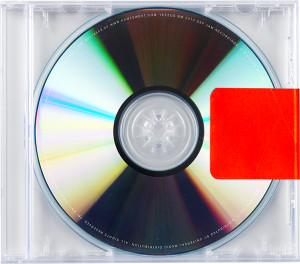
105. Kanye West – Yeezus (2013)
In 2013, we had understood what Kanye West could do with soul and with beauty. My Beautiful Dark Twisted Fantasy was released three years earlier and there were tracks on that album that were profoundly beautiful. But nothing quite prepared us for Yeezus, an album imbued with fear, pain, rage, monstrosity, and, yes, beauty. Yeezus does rage. His use of incredibly loaded terms and imagery to speak on relationships and his privileged position in the music world are cause for pause. Yeezus is an album where the detractors are often correct in their critiques, yet the album also taps into something very raw, something very contradictory, and ultimately, something very Kanye. It’s an album that is encompassing in its tone, done so precisely and elegantly that it gave us a new dimension of Kanye. – Jackie Im
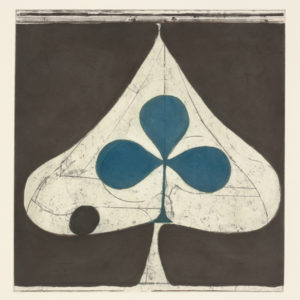
104. Grizzly Bear – Shields (2012)
Built on the already opulent foundation of Veckatimest, Grizzly Bear’s fourth LP maintained their commitment to aduacious analogue fidelity and pushed further into unexplored sonic territory. Aside from its dreamy passages that collapse into unexpected bouts of sparring, jazzy riffs with slippery percussive arrangements and a rich bass, Shields was and is Grizzly Bear at their height of technical proficiency, channeling their efforts into a starker, more mature series of arrangements that flirt with a darkness that was absent in their early works. – Brian Roesler
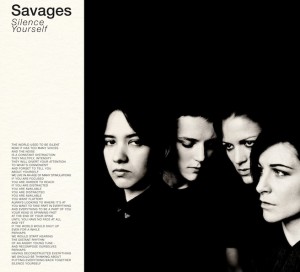
103. Savages – Silence Yourself (2013)
The definitive Savages experience is seeing vocalist Jehnny Beth walk on the hands of a mass of people like some kind of goth-rock messiah. But a close second is Silence Yourself, the band’s urgent, agitated debut that makes incendiary hay of the idea of “post-punk revival.” While they’ve certainly learned the right lessons from Siouxsie Sioux and Daniel Ash, Savages eschew the cookie-cutter style-over-substance trends of the prior decade in favor of a roaring presence that tears down and sets fire to modern institutions in barnburning singles that you can occasionally dance to (“She Will”) or more likely incite a riot (“Husbands”). Now just imagine all that happening while Beth is levitating over the arms of a few thousand people, and you get the complete picture. – Jeff Terich
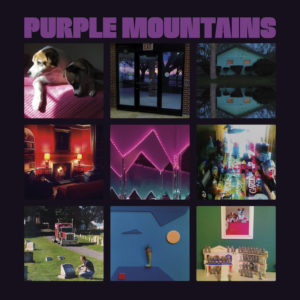
102. Purple Mountains – Purple Mountains (2019)
David Cloud Berman’s end-all document, Purple Mountains, is chock full of quotable Bermanisms—there is joy, ceaseless, breathtaking fear, contemplation, solipsism. It is a dense and complex and emotionally taxing record. There is nothing that sounds like Purple Mountains, no piece of music as clear cut and precise as Berman’s final words—and what did we expect? Berman is a heavyweight writer—his lyrics, prose, and poems all share the same hyper-specific attention to otherwise mundane details; exploitation of American life, post-capitalism, and love; precision and articulation of complex emotions and fluid movements of moods. Yes, Purple Mountains reads like a suicide letter, but it might bring some peace of mind to know he was putting his all into these songs, toe-to-toe with a fierce, relentless opponent. Turns out the wrong team won in the end. – Timothy Michalik
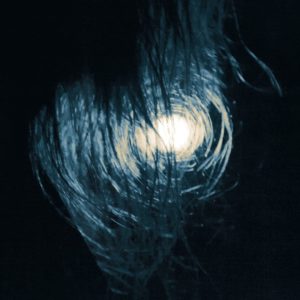
101. Oranssi Pazuzu – Värähtelijä (2016)
This psychedelic, spacey black metal outfit may currently be Finland’s greatest export. Oranssi Pazuzu have been bending the rules and blurring the lines of black metal for roughly a decade now, but their 2016 album, Värähtelijä, put them on a higher platform in metal circles across the world. Synths and guitars seem to melt together while Jun-His wails and bellows over blackened kraut- and surf rock. It all pools into one of metal’s most immersive offerings in years. – Cody Davis
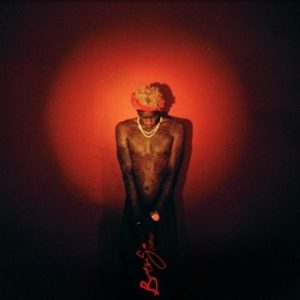
100. Young Thug – Barter 6 (2015)
Young Thug is the most underrepresented artist on this decade list, but let me explain. Try picking your favorite Thug release. No, really, try. There’s 21 to choose from in this decade, EPs not included. The vote spreads thin among our sample group of uhh, annoying music critics. But Barter 6 is Barter 6, and between you and me, it should be much higher on this list. Young Thug’s creative output is natural and Barter 6 feels nothing less than organic. It’s brilliant, sardonic, inspirational—if “Constantly Hating” doesn’t light a fire under your ass maybe you should try lighting a literal fire under your ass. “With That” is impeccable; “Halftime,” divine. Since 2011, Young Thug’s craft has flourished. To say Young Thug is the artist of the decade would be accurate, yes, but to say Young Thug is the artist of a generation would be the plain truth. – Patrick Pilch

99. Spoon – They Want My Soul (2014)
Everyone, from card sharks and street preachers to educated folk singers, wants Britt Daniel’s soul. Even his old middle school bully Jonathan Fisk, of Kill the Moonlight fame, wants his soul. Perhaps it’s due to all of these forces acting on the speaker that this is one of Spoon’s most adventurous albums to date. There’s a fighting spirit to the album, a resistance to settling into a groove, though it’s plenty groovy, and these songs are tight as anything Spoon has made. They’ve never really made a song like “Inside Out” before, whose cascades of otherworldly harp-like keyboard and Dr. Dre-inspired beat made it an instant-classic addition to Spoon’s catalogue. From the tactile, staccato strums of “Knock Knock Knock” to the featherweight synth grooves of “New York Kiss,” They Want My Soul’s range is what makes it stand out in Spoon’s stellar discography as one of their greatest records. – Tyler Dunston
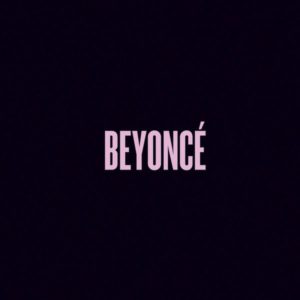
98. Beyoncé – Beyoncé (2013)
The secret bombing campaign Beyoncé unleashed during the 2013 holiday season had its share of surprises: a video album, a practically unheard-of co-producer in BOOTS, and an aggressively cinematic air with scattershot pulses and rumbling foundations. But Beyoncé’s sudden frankness, primal carnality and wary confessionalism were the biggest stunners. Her suite of transfixed sexuality (“Drunk in Love,” “Blow,” “Partition”) gave her voice a new palette to work with, which helped her rise to empowering occasions (“XO,” “***Flawless”) and an exquisite ending of agony (“Heaven”) and ecstasy (“Blue”). They don’t give the crown to just anybody. – Paul Pearson
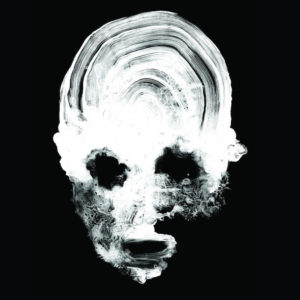
97. Daughters – You Won’t Get What You Want (2018)
Dark, brooding, a trembling and vicious howl from an abyssal beyond that absolutely decimates the listener, You Won’t Get What You Want is almost an anti-album. Its experimentation almost eclipses its ambitions, and if not for a ruthlessly tight production and a conceit for an anti-pop genius that borders on aural hypnotism, it just wouldn’t work. It’s why the album is such a cause for critical approach and analysis. The engine of it is operating on so many layers and levels that it seems almost to be a cursed approximation of modern existence—anxiety ridden, fearful, violent and yet we listen to it because it does more to mirror the tragedy that coats our lives, like the ironic listless nihilism that contorts in our voices and shadows. This album from “Satan in the Wait” to “Ocean Song” explores these concepts with a sense of occult-like command and scholarly ambition. It is a masterpiece of the darkest this decade had to offer. – Brian Roesler
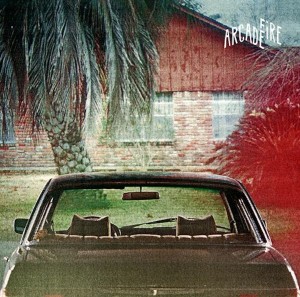
96. Arcade Fire – The Suburbs (2010)
It’s 2010. Suddenly, you’re grown up, entering the workforce in a society that doesn’t place much value on the individual beyond their value as human capital. You’re looking back at your childhood, surprised to find it in the past. And Arcade Fire have just released a basketful of anthems for you called The Suburbs. Though not as raw as their masterful debut, Funeral, The Suburbs made up for that by applying Arcade Fire’s knack for invigorating mini-epics to the disaffected generations growing up in the 21st century, snagging an unexpected Album of the Year Grammy in the process. Arcade Fire understood how, for a twenty-something caught in between childhood and adulthood, the desire for escape somehow perfectly characterizes both. “Sprawl II (Mountains Beyond Mountains),” embodies the cauterizing energy of the record—both a fuck-you to those telling us to “just punch the clock” and an anthem for the alienated. – Tyler Dunston
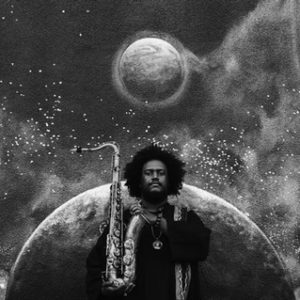
95. Kamasi Washington – The Epic (2015)
Was this the time or the place for a longtime sideman and DIY soloist to make a proper label debut in the form of a triple LP with nearly three hours of spiritual jazz? Conventional wisdom in this age of the nonexistent attention span would say no. Yet here sits Los Angeles saxophonist Kamasi Washington, propped up by a niche hip-hop imprint, nestled in far more earholes than probably anyone expected. As comfortable as he is here turning phrases on Debussy’s “Clair de Lune” or old Ray Noble standards, Kamasi Washington made admirable, massive arrangements that crossed the wires of pop (“The Rhythm Changes”), psychedelia (“Miss Understanding”), and gospel (“Change of the Guard”). If you think of any performer and album that kickstarted anything resembling a new wave of young jazz lions in the 21st century, odds are Washington is the player and The Epic the album. – Adam Blyweiss
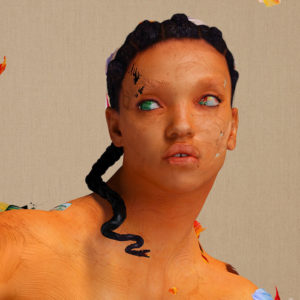
94. FKA twigs – MAGDALENE (2019)
MAGDALENE is a stunning lyrical excavation of loss and endurance as well as an equally stunning musical statement of purpose. Opener “thousand eyes” evokes medieval polyphony, “sad day” is an emotionally resonant future-pop triumph, “holy terrain” stars “sad Future” (twigs’ words), and “cellophane,” the deservingly celebrated closer, is a stirring piano ballad in which twigs’ voice ranges across two octaves. Such musical range on a single album rarely feels so cohesive, but while FKA twigs’ musical ideas and collaborators are wide-ranging, she excavates her themes with laser-like precision. Loss is present on every song, vivid and tangible, fleshed out by the accompanying themes of desire and inner strength. An album so disarmingly intimate and human, plumbing personal anguish, doesn’t always make for an easy listen, but catharsis is never easy. And with songs as good as these, pleasure and pain go hand in hand. – Tyler Dunston
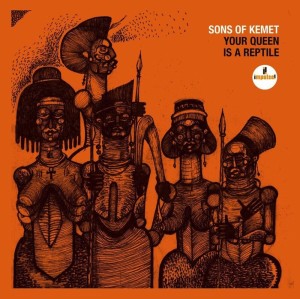
93. Sons of Kemet – Your Queen Is a Reptile (2018)
Balls to punk. The most fiery and intense protest album of the post-Trump and post-Brexit age is…jazz? Whether or not it looks right on paper, it most certainly sounds right on wax. Sons of Kemet’s Impulse! debut found the London-based quartet mixing grooves with grievances while letting the rhythms do most of the talking (except for when Joshua Idehen picks up the mic: “Burn UKIP, fuck the tories/Fuck the fascists, end of story“). The nine tracks on Your Queen Is a Reptile are all named for heroic, influential Black women throughout history, from Harriet Tubman to Angela Davis, elevating these icons and celebrating Black womanhood while kicking sand at the far-right’s racist agenda. Celebration, demonstration and weaponized joy, all from one saxophone, one tuba and two drum kits. – Jeff Terich

92. (Sandy) Alex G – Trick (2012)
Take a look at the cover of Trick. Click to expand. According to the singer-songwriter, the hazily symmetrical photograph was snapped by painter sibling Rachel Giannascoli. It was taken at a funeral; the high-tailing hound is a stray. Upon first glance, there’s nothing particularly remarkable about the shot, it just is. The image organically reflects the musical temperament of Alex G; that Carver-esque inconclusiveness, a sense of melancholic stagnancy, a brief wrinkle in mundanity that’s only as upsetting as you make it. Trick captures Giannascoli’s ability to express a specific open-endedness, perhaps most potently sung in the final lines of “Memory”: “A lot of positive messages/something left unclear.” The words practically serve as an interpretive device for the musician’s entire discography. Substances, simplicity and an unnerving sense of suburban ennui, Giannascoli’s late 2012 release marked the unstoppable kindling of a naturally prolific songwriter. – Patrick Pilch
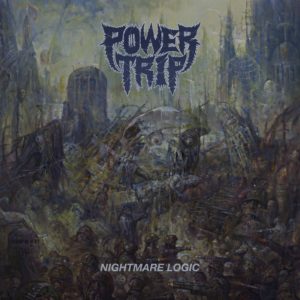
91. Power Trip – Nightmare Logic (2017)
Texas crossover force Power Trip has been a billowing power in metal for quite some time, but the sheer energy and infectious force of Nightmare Logic saw them erupt. “Executioner’s Tax” and “Soul Sacrifice” are two examples of a record packed to the brim with anti-authoritarian ideals, razor’s-edge riffs and fiery thrash rhythms that have turned this band into the best modern example of metal’s early roots in taking on establishments and challenging the status quo. Swing of the axe! – Cody Davis

90. Kacey Musgraves – Golden Hour (2018)
After meeting her would-be husband, Ruston Kelly, Kacey Musgraves started to see a happier, lighter side of life and love. That’s not to say he was the answer to every problem, he just helped open her eyes to how much easier life can be when you have someone to face it with. Golden Hour paints an idyllic yet realistic picture, one that speaks volumes to the power of love and support. Musgraves’ lyrics show a new understanding of its effect, like on the dreamy “Butterflies” when she sings, “Kiss full of color makes me wonder where you’ve always been/ I was hiding in doubt ’til you brought me out of my chrysalis / And I came out new / All because of you.” Each song on Golden Hour is a warm take on country, dipping its toes in the psychedelic but staying grounded in twangy, nostalgic guitar riffs. – Virginia Croft
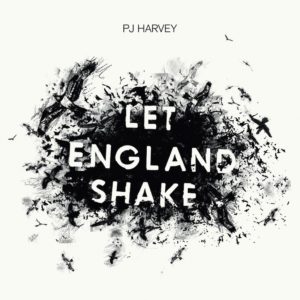
89. PJ Harvey – Let England Shake (2011)
PJ Harvey’s Let England Shake is, loosely, a “folk” record. It’s also a love-hate letter to her native England. Let England Shake is a complex place to enter Harvey’s massive, seamless discography—her ‘90s albums were equally angry as they were beautiful and sincere, always slightly bluesy, usually brimming with noise and feedback. Let England Shake is restrained, hushed, unequivocally mature. Harvey’s long-run career has grown better with age—wherever Harvey is in her life, her music and lyricism shifts, too. It’s not that energy on Let England Shake is low, it’s simply channeled through alternate means. Desire takes the back seat—political and self-awareness are at the forefront, as Harvey makes sense of endless tragedy and war, inescapable in our day-to-day lives. – Timothy Michalik
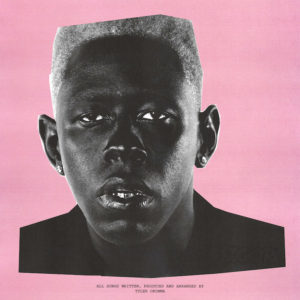
88. Tyler, the Creator – IGOR (2019)
Tyler’s transformation from misanthropic rapper into one of hip-hop’s most emotive and eclectic talents has been absolutely brilliant to witness. His newest effort, this year’s IGOR, is his—and one of 2019’s—finest moment. Immersed in heartbreak and societal observations, IGOR follows a love triangle narrative that ultimately falls apart for the main character.
Holistically speaking, IGOR showcases a certain vulnerability from Tyler—as well as his indomitable penchant for risk-taking and unique song composition. “EARFQUAKE,” the album’s lead single, and “A BOY IS A GUN” show Tyler’s off-kilter brand of neo-soul and pop while “NEW MAGIC WAND” and “WHAT’S GOOD” loosely call back some of his early year chaos with Odd Future and other features. They’re two sides to a translucent coin of Tyler’s past and present. – Cody Davis
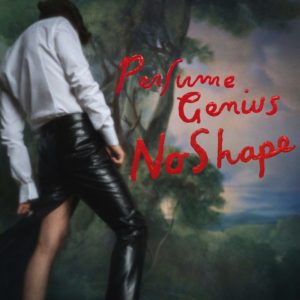
87. Perfume Genius – No Shape (2017)
“I’m here, how weird.” This simple line comes on “Alan,” the quiet piano ballad that closes No Shape. It sums up the record: queer physical existence is debilitating, and to still be alive feels both improbable and unfair. The sound of No Shape reflects this: it’s at times heavy (“Otherside,” “Slip Away”) but always ethereal (“Just Like Love,” “Die 4 You”). Mike Hadreas is oppressed by his body and yearns to escape it.
The first half of the record is more referential, complete with a pounding Kate Bush anthem, a Cure-like wall of glittering sound, and a bit of Prince-ian freak funk. It’s the work of a joyful oddball, both in love and horny in ways that queer people rarely get to be. But it’s “Valley,” both the turning point and the centerpiece of the record. It’s about Hadreas seeing a vision of a woman he knew from rehab on the street and wondering if she was still alive. The song sways like a waltz—perhaps a reference to the daily dance that addicts do every day—and ends with the lines, “I wouldn’t blame you for wanting out, I’m kind of close myself, no love, no, no amount, never enough to go around.” It feels like the core of No Shape: the everyday struggle to make peace with your bodily existence. – Ben Cohn
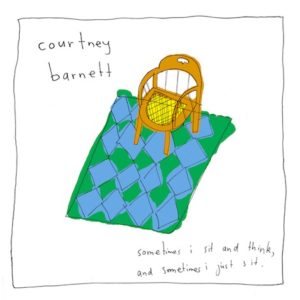
86. Courtney Barnett – Sometimes I Sit and Think, and Sometimes I Just Sit (2015)
Like her fellow Australians Paul Kelly, Colin Hay, even Bon Scott to an extent, Courtney Barnett brings a plain-spoken appreciation of routine events that only detachment from the rest of the hyper-connected Anglo axis can provide. Her details set her apart—more accurately, her questions about those details, and her certainty that they have to be asked. It’s what puzzles her about the carefree escapee of “Elevator Operator,” her odds with the industry in “Pedestrian at Best,” her search for a home in “Depreston,” and her uncomfortable ecological realizations in “Dead Fox” and “Kim’s Caravan.” Put together with her clawing guitar—as well as that of collaborator Dan Luscombe (The Drones), responsible for the coarse and forceful solo in “Small Poppies”—you have someone whose basic resources will take her anywhere she wants to go. – Paul Pearson

85. Lorde – Melodrama (2017)
There’s something to be said for heartbreak, isn’t there? For being so sure that 1. someone is right for you and 2. they won’t love you? It can be a thrill, and it can also be just absolutely crushing. Lorde’s second album really communicates that duality so well. Melodrama is 40 minutes of blown-out maximalist pop (with, naturally, some well-placed ballads) about the pull between exhilaration and devastation, existing in the space between the question and the answer. The album is so clearly the work of a young person feeling things so intensely; Lorde is an immensely affecting vocalist and she imbues this whole thing with so much emotion, and the idea that she had the clarity to express it while feeling that way is kinda astonishing. It’s cool, too, that this album’s ostensible narrative takes place at a house party, because I’m just sure that this thing’ll get played at cool kids’ kickbacks over and over again. – Ben Dickerson
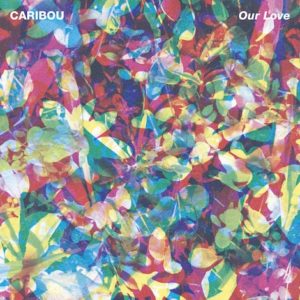
84. Caribou – Our Love (2014)
The 2010s, especially early, ran hella deep with new takes on the synth-driven love song. After graduating from his IDM stage name Manitoba, and before diving fully into dance music as Daphni, Ontario’s Dan Snaith stood toe-to-toe with individual efforts like Toro y Moi and full bands like Hot Chip. Caribou grew into kitchen-sink electropop, and Our Love found Snaith’s naive vocals and quirky Balearic grooves elevating a sturdy effort addressing the facets and foibles of love, from Jessy Lanza vehicle “Second Chance” and love song to his child “Can’t Do Without You” to “Back Home,” pondering if absence really does make the heart grow fonder. – Adam Blyweiss

83. Vince Staples – Big Fish Theory (2017)
The push in hip-hop over the last decade to sound less and less like rap’s golden era has been riveting to see, and one of the best young talents doing it is North Long Beach’s Vince Staples. Big Fish Theory pulled in elements of house and techno as well as other avant-garde tendencies. Yet, for all the upbeat vibes the beats convey, Staples’ commentary is rooted in nihilism and against an ever-present threat of racism. The two facets wonderfully meld into an electrifying tale. – Cody Davis

82. Emma Ruth Rundle – Marked For Death (2016)
Tired: Retreating to a cabin in the woods to make an album. Wired: Holing up in the desert to bring about signs of the apocalypse with your baritone guitar and delay pedal. Emma Ruth Rundle, a veteran member of Red Sparowes and Marriages, isolated herself in the California desert in a landscape that she described as “bleak,” and you can feel every stinging cloud of dust, every bitter chill, every moment of desperation on Marked For Death. The beauty that Rundle arrives upon is earned via toil and ache, the power she wields only given through experiencing the deepest wounds. Bluesy, atmospheric, but harnessing an immensity that rivals the heaviest doom metal, Marked For Death sounds like survival. – Jeff Terich
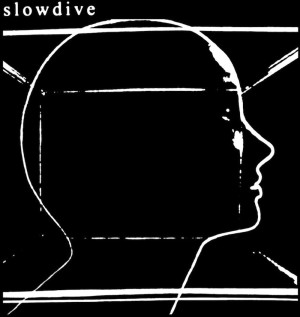
81. Slowdive – Slowdive (2017)
The decade’s other shoegaze comeback story, Slowdive ended a 22-year gap in 2017 with a self-titled album. The similarities with My Bloody Valentine end there, though: in contrast with the murky thunder of m b v (keep reading), Slowdive is rendered in such pristine clarity that it practically gleams. “Sugar for the Pill” is a chiming take on ‘80s dream pop, while the guitar line on “No Longer Making Time” sounds like it’s just barely holding back tears. But if you want something that brings the noise, Slowdive has that, too; strap into the roaring “Star Roving” and feel its white-hot guitar barrage blast you into orbit. – Jacob Nierenberg

80. Japanese Breakfast – Psychopomp (2016)
Born partially out of the trauma following the death of her mother, as well as a song-a-day challenge that has since become the blueprint for future material, Michelle Zauner’s first proper full-length as Japanese Breakfast is as personal as 2010s bedroom pop gets. Vivid, revealing and humbly underproduced, Psychopomp finds the former Little Big League vocalist in restless pursuit of introspection and healing. Zauner processes domestic violence (“Rugged Country”) the impending passing of her mother (“Heft”) and the contrast of Asian and American cultural norms (“The Woman That Loves You”). Psychopomp’s dark undertones contrast its predominantly bright musicality, a deliberate stylistic choice Michelle Zauner executed flawlessly on Japanese Breakfast’s debut. – Patrick Pilch
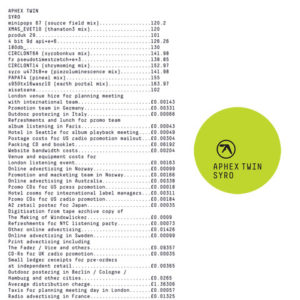
79. Aphex Twin – Syro (2014)
So far, the 21st century has seen its share of triumphantly returning electronic acts. Daft Punk recast the whole damn genre of disco, Boards of Canada painted the apocalypse in pale pastels, and even Kraftwerk biked the world many times over. But Syro was a 12-year-long pent-up orgasm, a restatement of Richard D. James’ spine-shivering dominance over the realm of braindance. It’s an album that not only reveled in the joy of endless permutations of sound, but skillfully arranged them to present illusions of floor-stormability (“180db_”), gnarled synth-funk at ludicrous speed (“CIRCLONT6A”), and even modern classical (“aisatsana,” a tender companion to “Avril 14th”). – Adam Blyweiss

78. Moses Sumney – Aromanticism (2017)
You’ve probably never heard a singer like Moses Sumney, not just because of how he sings—his sighing, elastic voice often stretches into a cracked falsetto—but what he sings. In a world full of songs about love lost, Aromanticism explores the sensation of never loving at all. Sumney’s earliest releases showed a lot of promise, and he more than delivered on his first full-length project, quickly and capably crafting kaleidoscopic, sweeping songs like “Lonely World” and “Quarrel”. Still, it’s the album’s quietest moments—the dreamy folk of “Plastic”, the ambient a cappella of “Doomed”—that often speak the loudest, peeling back the musical layers to reveal Sumney’s broken, beating heart within. – Jacob Nierenberg
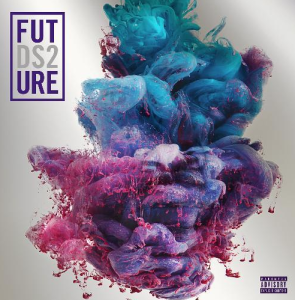
77. Future – DS2 (2015)
For a time in the 2010s, it seemed as if there was a new Future mixtape every month. His prolific output had a disorienting effect: for even the most ardent fan, it could be difficult to distinguish them from each other. The problem is that, for the most part, Future is consistently good, even a tape that is maybe not as good as the other ones is still wildly listenable. DS2 bucked those tendencies by distilling the best of Future: the moody hedonism, the finely tuned and nimble beats (largely provided by Metro Boomin), and the ineffable charisma. Songs like “Thought It Was a Drought,” “I Serve the Base” and “Fuck Up Some Commas” became gold standard Future songs for the most simple reason: they slapped. There were other releases after, but DS2 remains the album that unlocked the best of Future. – Jackie Im
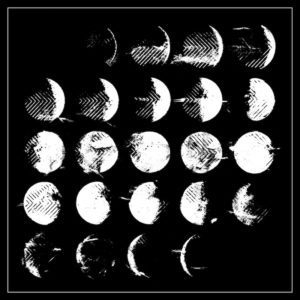
76. Converge – All We Love We Leave Behind (2012)
It’s easy to assume that the only people who are in hardcore bands in their thirties and forties are people who already had hardcore bands in their teens and twenties. In the case of Converge, for two decades and change that just happens to have been the same band. To hear them tear through a blistering, metallic slab of violence such as “Trespasses” or “Sadness Comes Home” from 2012’s All We Love We Leave Behind, however, you’d think they were immortal. The Salem icons’ eighth album arrived at a stage when Converge struck the middle section of the venn diagram of elder statesmen and pace-setting innovators, their output as punishing as ever while retaining a sophistication that only comes with decades on the road and in the studio, their metallic ferocity honed and perfected as a lifelong craft. The album’s title alludes to as much; they’re the best at what they do because they’re relentless workhorses. But in those perfect moments of menace and melody, like “Veins and Veils” or the title track, you might also catch what sounds like a team of seasoned vets enjoying the hell out of what they do. – Jeff Terich

75. Shabazz Palaces – Black Up (2011)
Some might have expected Ishmael Butler’s new group to follow in the laid-back, jazz-rap footsteps of his previous group, Digable Planets. Instead, he and multi-instrumentalist Tendai Maraire decided to blast off into the cosmos. Their first full-length transmission from the inky darkness of space was Black Up, an abstract, murky record that sounds like it was recorded in the cavernous bowels of some unknown planet. Its songs are constantly morphing and hard to pin down—opener ”Free Press and Curl” throws listeners right into the deep end of the pool, and the song structures only get stranger from there. Butler’s lyrics, though, reveal concrete anxieties about the world around us—the internet’s tendency to exacerbate racism, the toxicity of a profit-driven culture—providing a rock-solid heart to the album’s gorgeous, nebulous atmosphere. – Sam Prickett
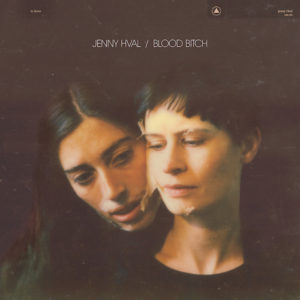
74. Jenny Hval – Blood Bitch (2016)
Hval has mastered composing brooding soundscapes which pulse with a dark, enigmatic force. Blood Bitch is literary avant-pop with a vampiric and menstrual aesthetic, using blood as a symbolic sword to slash through her fuming sub-conscious, pulling from ‘70s horror and exploitation films, strung together by Hval’s non-linear methods of utilizing synthesizers. In “Untamed Region,” Hval writes “I dip my finger in it / Smells like warm winter / Then I feel the need to touch everything / Everything in this room,” after waking up with blood on the sheets. Hval also writes gorgeous prose: her 2018 novel, Paradise Rot is cold, terse, and magical. This style translates to her musicality and lyrics, too—on “The Great Undressing,” Hval explores and reasons with her absurdly human desires: “You must be disgusted / But I need to keep writing because everything else is death / I’m self-sufficient, mad, endlessly producing / I don’t need money, I just need your love / Or your approval, anything.” For the deep magical-realism of Hval’s discography, her music is infinitely human and complex. – Timothy Michalik
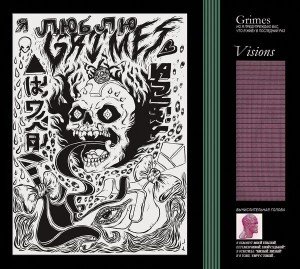
73. Grimes – Visions (2011)
Claire Boucher’s Juno Award-winning third studio album as Grimes, Visions (composed entirely within the confines of GarageBand), explores sexual assault, personal biology, strategized love, and the biology and natural cycles of love. And that is barely scratching the surface. Visions is also one of the most remarkable synth-pop (emphasis on pop) records of the century, if not ever. Both “Genesis” and “Oblivion” are monstrous indie dance hits, while “Circumambient” and “Visiting Statue” explore deeper trenches in Boucher’s pop-theorist psyche. Visions is what you might call a “mood” record, but that doesn’t really cover it—Visions invites you in, tosses you around, and rolls you out the back door, perpetually perplexed. It fills the air of the room and devours you, its singularity almost intimidating. – Timothy Michalik

72. Andy Stott – Luxury Problems (2012)
Andy Stott’s Manchester carries the sinister shadows of Joy Division and the pulsing BPMs of the Hacienda, but unlike the real epicenter of MCR club culture, it hasn’t been paved over to make room for condos. His second album Luxury Problems is, instead, one of the most beautifully unsettling moments in the decade’s overflowing stream of dark techno, juxtaposing industrial beats against the spectral voice of collaborator Allison Skidmore. Luxury Problems spans from the hauntingly euphoric (“Numb”) to the corporeally urgent (“Luxury Problems”) to the outright menacing (“Sleepless”), all intertwined in a network of corroded beats and dub-inspired basslines that revealed Stott as a visionary architect of a shadowy future. – Jeff Terich
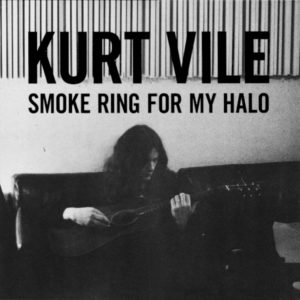
71. Kurt Vile – Smoke Ring For My Halo (2011)
Kurt Vile said that the songs on Smoke Ring For My Halo are about “those thoughts you have, late at night, when nobody is around”—fleeting, sometimes incomplete ideas, concepts that don’t quite come together, resolutions that are always beyond the horizon. Lyrically, it’s messy; Vile jumps from the one he loves (“Baby’s Arms”) to misplaced faith (“Jesus Fever”) to the system (“Puppet to the Man”) to the fragments of dialogue in “On Tour.” What remains constant is the dreamily intricate rock music that underscores each half-finished thought, completing the picture of a landscape whirring by as a heavily-weighted mind wanders. It’s Vile’s prettiest album while feeling like his most honest, which is to say entirely, unfailingly, in the moment. – Jeff Terich

70. King Krule – The OOZ (2017)
Before King Krule, before Edgar the Beatmaker, before he was releasing music under his birth name, Archy Marshall was Zoo Kid. Zoo Kid’s songs were sickly, tender-hearted things: “My tongue was in love / But my heart was left above,” he sang on “Out Getting Ribs,” a delicate, crackling love song that could’ve been a lost Clientele tune. Then Zoo Kid fell silent, and was replaced by tougher, flintier personas.
The OOZ is Marshall’s second album as King Krule, but it sounds like a mutant fusion of all of Marshall’s music to date. In absorbing them, The OOZ amplifies the calling cards of Marshall’s various pseudonyms: the aqueous trip hop of its production echoes that of A New Place 2 Drown, only more waterlogged, while King Krule himself sulks about the premises, simmering with malice on “Dum Surfer” and “Half Man Half Shark.” Unexpectedly, it’s Zoo Kid who’s the most visible, wearing his tender heart on his sleeve and singing some of Marshall’s most vulnerable, even romantic tunes yet. – Jacob Nierenberg

69. Protomartyr – Under Color of Official Right (2014)
Protomartyr’s stoic sophomore effort offers a brutalist glimpse into Midwestern gloom, a firsthand account of treason, betrayal and violence told through the band’s Austerien strain of postmodern punk. Under Color of Official Right broadcasts Joe Casey’s quick-witted truth, as the vocalist’s leery delivery offers dour accounts of “human Dieldrin” and “dead moods,” each track a grim vignette of various corruption and despondency. Catchy as some tracks may be, the record’s lyricism is vivid and dense; it’s the reason Official Right demands repeated spins years later. Casey draws literary parallels between Motor City corruption (“Bad Advice”), band politics (“Ain’t So Simple”) and an overwhelming sense of everlasting doom (“Maidenhead”). The morose poet is painfully pessimistic, but who can blame him? It’s all violent. – Patrick Pilch

68. Janelle Monáe – The ArchAndroid (2010)
Monaé’s Cindi Mayweather suite, spread across a debut EP and two albums, pulls a lot of its narrative from the futurism of Fritz Lang’s Metropolis and Philip K. Dick stories, but musically it mines from an abundance of R&B and pop styles. The ArchAndroid revels in the diversity without ever peeling back the curtain, largely because Monaé’s vision is compelling on its own even as she sweats the details. The storyline of a knotty romance between android and human almost disappears beneath the execution, in which disparate genres swirl around each other, sometimes within the same song. But The Archandroid’s several perfect moments—“Tightrope,” “Wondaland,” “Say You’ll Go”—say everything themselves about the potential of universality, at least in a musical sense. There’s a studied quality to much of Monaé’s work, but she accepts that the truest experts never stop studying. – Paul Pearson
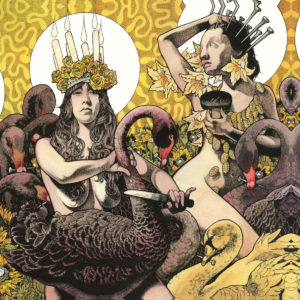
67. Baroness – Yellow and Green (2012)
Making your third album a double is an ambitious, even audacious move, but if you’re going to do it, might as well cram as many ideas as possible into it. The leap between Baroness’ first two albums proved significant enough, but by the time they released Yellow and Green in 2012, the Savannah, Georgia quartet had settled on exploring every possibility, seeking out unconquered territory, occupying unseen spaces. In parts, it proved as heavy as anything the band had done before, as on the booming lead single “Take My Bones Away,” but more often than not Baroness found themselves embracing nuance and psychedelic spaciousness to a degree they never had before (“Eula,” “Cocainium”), making their third effort as much a game changer for their own identity as it did for their visibility. Even so, that momentum was prematurely and temporarily halted shortly thereafter when the band suffered a harrowing bus crash in the UK that hospitalized three members and led to the departure of two. Seven years later, the makeup of the band looks different and the direction remains unpredictable, but their aim is true. Baroness charge full steam ahead, determined to follow their own star, tides be damned. – Jeff Terich
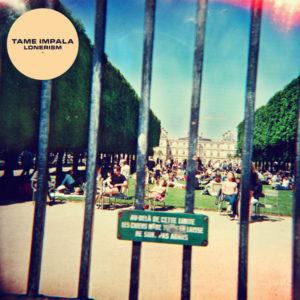
66. Tame Impala – Lonerism (2012)
Whenever I’m making visual art, this is the record I turn to. There’s something about psych rock that feels as visual as it is auditory, as if it’s designed to induce visuals without the psychedelics themselves. And Tame Impala’s Lonerism is that rare guitar-driven psych rock album that doesn’t feel revivalist but rather fresh and exciting. Somehow Kevin Parker and company managed to mine sounds from the past and give them a future. Currents was great, but in hindsight, the decision to drop the guitars (for the most part) in favor of a more ’80s-indebted synth-pop sound meant letting go of something they did better than just about anyone else. There was something special in the way the past and the present came together in Lonerism; songs like “Be Above It” and “Feels Like We Only Go Backwards” accomplish something fellow contemporary psych rockers failed to do, avoiding revivalism while retaining psych rock’s impressionistic grandeur. – Tyler Dunston
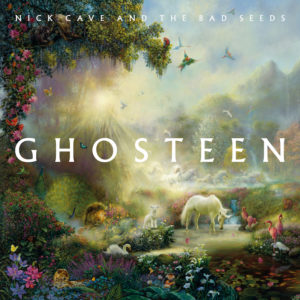
65. Nick Cave & the Bad Seeds – Ghosteen (2019)
Through a network of recurring images—flaming trees, burning horses, Jesus lying in his mother’s arms—and a sonic palette that sounds more like Boards of Canada or the Blade Runner soundtrack than the kind of music listeners have come to expect from The Bad Seeds, Nick Cave excavates the world-altering grief of losing a child. Sonically, with the help of Warren Ellis, Cave has driven deeper into the heart of the sound they waded into on 2013’s Push the Sky Away and 2016’s Skeleton Tree—spiraling synths, drones, spare piano, slow builds. Lyrically, Nick Cave has crafted a world of symbols, an entire mythology, with which to explore grief, faith, and love. Much like the poetry of the French Symbolists, Cave’s symbols are intelligible within a context created by the poet himself. However, these symbols from an individual mind quickly transcend the individual, becoming, in the act of listening, communal. – Tyler Dunston
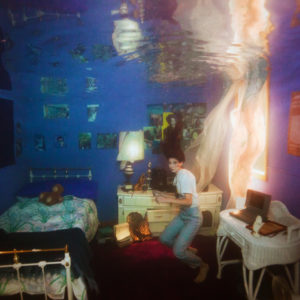
64. Weyes Blood – Titanic Rising (2019)
“I wanna be in my own movie,” Natalie Mering sings in “Movies”, the dazzling centerpiece of Titanic Rising, her latest album as Weyes Blood. But she does not say what kind of movie she wants to star in: perhaps a romance, perhaps a disaster film. Perhaps, like the blockbuster referenced in the album’s title, both.
She’s not making movies yet, but on Titanic Rising, Mering provides a gorgeous soundtrack for the end of the world as we know it. Weyes Blood conjures the boomer- friendly sounds of chamber pop and Laurel Canyon folk—comparisons to Joni Mitchell and The Carpenters abound—but Mering’s lyrics address millennial malaises: the struggle to find love on “Everyday” and “Andromeda”, losing friends to suicide on “Picture Me Better,” impending climate catastrophe on opening track “A Lot’s Gonna Change.” The strings in the latter song are reprised on the finale, “Nearer to Thee”—named after “Nearer, My God, To Thee,” supposedly the final song that the Titanic’s band played as the ship went down. But Mering isn’t resigned to fate just yet, searching for hope amidst our hubris. – Jacob Nierenberg
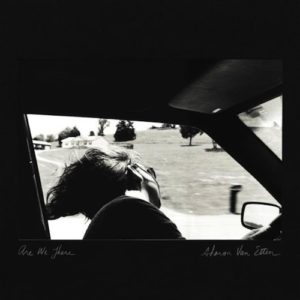
63. Sharon Van Etten – Are We There (2014)
Are We There is Sharon Van Etten’s finest achievement to date, an album that capitalized on her incredible range as a songwriter. From the devastating “Your Love Is Killing Me,” with its post-rock build and grandeur, to the observational, knowing and confident closer, “Every Time the Sun Comes Up,” the human spirit is always at stake. Opener “Afraid of Nothing” comes right out of the gate with earnestness, intensity, tenderness, some well-timed piano chords, and a stirring vocal performance from Van Etten. There’s restraint in the album’s pace, in the songcraft itself, and at times in the instrumentation, but thematically Van Etten has never shied away from raw, direct emotion—whether it be joy or pain or something in between. On Are We There, Van Etten’s stories find their perfect vehicle, resulting in some of the best songs of her career. – Tyler Dunston
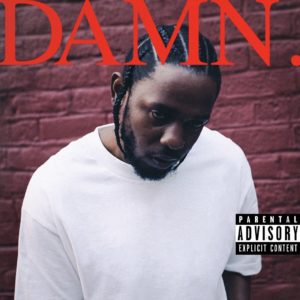
62. Kendrick Lamar – DAMN. (2017)
DAMN. is an album composed of deeply poetic, malleable tracks. When separated and rearranged (the album has been re-released with a reverse tracklist order already) its narrative changes, its intonations and lyrical passages of equal parts plight and pride seeming to elude and yet compliment one another. Like cut-up poetry, every track feels constructed and yet connected with a near faultless pedigree that allows them to exist both in a vacuum and along the continuum of their author’s vision. Kendrick’s greatest accomplishment (asides from the helical, duality prone “DNA.”) is Lamar’s own lyrical prowess, ranging from scathing indictments of the systemic issues that oppress people of color, to “Duckworth.”, an almost unbelievable tale of fate the resonance of which can be felt to this day in Lamar’s life. There will never be another album like DAMN., that much is certain. – Brian Roesler
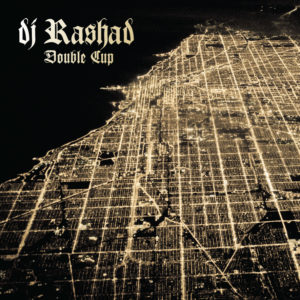
61. DJ Rashad – Double Cup (2013)
In 2013, the late Rashad Hanif Harden, better known as DJ Rashad, crafted the single most accessible collection of footwork music to date. Double Cup is the ambitiously dexterous studio debut from the hyper-talented Chicago-based producer, and the record has since become highly responsible for dilating the footwork movement as a whole. DJ Rashad’s cut-and-paste style of dance music is potent enough to have Dilla blushing in the afterlife—dancehall, techno and hip-hop coalesce in marvelous unison, a collagist’s dream. Double Cup’s samples stack jaggedly like shapeless puzzle pieces, with searing breakbeats juking between brilliant tempo play, each segment laced with spastic percussion and interlocking grooves. It’s hard to keep still listening to anything by DJ Rashad, this is bodily music. – Patrick Pilch
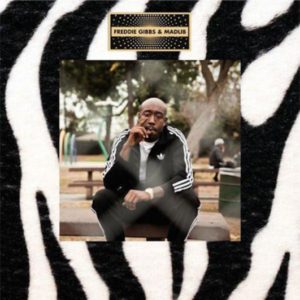
60. Freddie Gibbs & Madlib – Piñata (2014)
Madlib and Freddie Gibbs’ first effort was a perfect storm of hip-hop idealism: a brash MC whose crisp flow corroborates his confident boasts and a producer who, affectionately speaking, is an absolute geek about scoring his records with an abyssal-deep knowledge of musicology. Each of the two artists, respectively, are intent on bolstering their credit lines—Gibbs’ rep as an impenetrable griot and Madlib as an eccentric alchemist with his producing fingers 20,000 leagues into his record collection’s obscurity. Ostensibly this is Gibbs’ spotlight to extrapolate on his streetwise wisdom but Madlib’s compositions are so intricately crafted, every frequency and sample masterfully parsed and sequenced, Piñata’s robust sonic structures are just as prominent. In fact, Piñata’s production is so masterfully rich, the record feels like a dojo where Freddie Gibbs is tasked with employing his lyrical jabs, kicks and grapples to tangle. – Paul Glanting

59. Julia Holter – Have You In My Wilderness (2015)
Have You In My Wilderness is a pinball machine of textures, bouncing from ethereal ballads of “Betsy on the Roof” to the jazz growls on “Sea Calls Me Home.” Holter’s versatility almost makes her like a more earthly Björk, melding classical elements with crisp prog-rock. Perhaps this is far too subjective but Have You In My Wilderness is a near perfect soundtrack to a starry, slightly chilly, Los Angeles night while you stare out of your window wearing cowboy boots as a cow skull sits above the window watching on. – Paul Glanting

58. FKA twigs – LP1 (2014)
It seems remarkable that LP1 was FKA twigs’ first album. It arrived so distinct and so singular in its vision; it was a statement of purpose and paved the way for each new innovation that came after. It is hard to divorce FKA twigs’ music from movement. Each breathy vocal and twitchy beat feels intrinsically coupled with twigs’ sinewy movements; a performance that is just as much physical as it is emotional or mental. LP1 is an album that practically vibrates with possibility and promise. Listening to songs like “Two Weeks,” “Pendulum” or “Kicks,” you’re keenly aware that twigs will only grow and push herself to new places. – Jackie Im

57. Tim Hecker – Ravedeath, 1972 (2011)
Not everything Tim Hecker does is dark, dirty or distorted, but his greatest works to date have been informed by focusing in on decay, whether moral or societal or simply musical. Ravedeath, 1972 is primarily the latter, a gorgeously corroded piece of ambient recordings wherein the sounds of live pipe organ are filtered through noise, effects and turned into euphoric, shoegaze-like drones. Hecker finds an emotional grounding in broken things, touring crumbling, abandoned places that somehow retain their sense of majesty and grace. Like William Basinski’s Disintegration Loops, the compositions on Ravedeath are defined as much by their sounds as they are the ways in which they fall apart. – Jeff Terich

56. Sun Kil Moon – Benji (2014)
Don’t have heroes, don’t ever have heroes, lest they reveal a dark side that makes you question your allegiances and beliefs. It’s a sentiment worn well by comic-book villains, but it was also writ in stark relief in music when Sun Kil Moon’s Mark Kozelek turned bully and misogynist in the second half of 2014. Still, we’ll always have Benji, collecting this outfit’s last few moments before his career ate its own tail. It’s a fast-fading reminder of the delicate, wavering slowcore he developed with Red House Painters: autobiographical without being wholly or horribly observational, reverent towards death without being morbid, hazy and hooky in equal measure. In the canon of appreciating difficult art and artists, here we find the blogger about to head down the up staircase, into their mother’s basement instead of out of it. – Adam Blyweiss
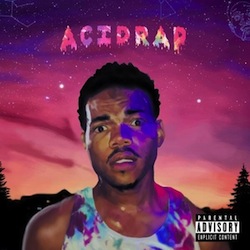
55. Chance the Rapper – Acid Rap (2013)
Seldom has anything available for free pointed toward the future of a money-fixated industry like the music business, but Chance the Rapper’s second mixtape broke more than a few molds. With the help of some connected friends, meta-linguistics and “about 30 to 40 percent acid,” the Chicago kid made a de facto album that could barely keep its joy and compassion contained. Unburdened by expectations, Chance earns affection with his sheer skill and a lust for life that rivals Zorba the Greek’s. This happens even as he stands up for the Windy City’s broken spirit in “Paranoia” and “Everybody’s Something,” or reflects on a simpler childhood in the still-tear-jerking “Cocoa Butter Kisses.” But the not-so-dumb bliss attached to “Juice,” “Favorite Song” and “NaNa” may singlehandedly keep this experiment in democracy afloat. Not bad for something you can still get at 100 percent off. – Paul Pearson
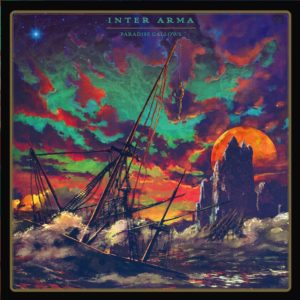
54. Inter Arma – Paradise Gallows (2016)
There’s nothing particularly traditional about the metal that Inter Arma makes, nor is it necessarily easy to describe. The Richmond band is something of a Rorschach test—some people listen and hear black metal, others might say it’s actually doom. They’re both right and they’re both wrong, but what makes an album like Paradise Gallows both powerful and endlessly listenable is the ways in which Inter Arma navigates the blurry in-between spaces that have only widened as metal reaches its 50th year. The band crafts gorgeously spacious landscapes as well as they do pummeling monoliths, each of which are combined brilliantly into one track on the 11-minute “The Paradise Gallows,” while “The Summer Drones” reveals a psychedelic streak that they’ve since tapped for more moments of inspired weirdness. And on “Primordial Wound,” Inter Arma delivered the most brutally slow anti-Trump anthem that metal didn’t know it needed. Every Inter Arma album on some level feels like it’s soundtracking humanity’s collapse; Paradise Gallows is the one that suggests it’s not happening without an epic battle. – Jeff Terich

53. The Caretaker – An Empty Bliss Beyond This World (2011)
It’s difficult to imagine anything more terrifying than your own mind turning against you, as demonstrated by the increasingly deranged and homicidal Jack Torrance in The Shining. Such psychic betrayal forms the backbone of James Leyland Kirby’s work, both in its nods to King and Kubrick and in its conceptual exploration of Alzheimer’s disease and dementia. Pretty, spectral melodies from crackly 78s fade in and out of focus, and some tracks even repeat themselves as an unnamed and unseen figure attempts to recover memories through musical fragments. An Empty Bliss Beyond This World is beautiful and terrifying, an empathetic and highly conceptual work that often feels supernatural. – Jeff Terich
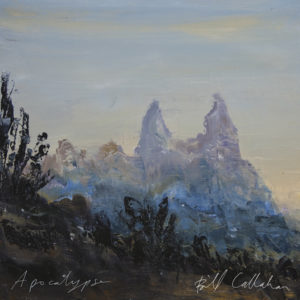
52. Bill Callahan – Apocalypse (2011)
Before it meant the end of the world, “apocalypse” was Greek for “revelation.” The word appears in two songs on Bill Callahan’s album of the same name: the contemplative “Riding for the Feeling” and the stately “One Fine Morning.” In both songs, Callahan sings it with a possessive—“my apocalypse”—and in a way that conveys faint bemusement, like something’s just dawning on him.
Moments of clarity such as these are few and far between in Callahan’s discography. Since retiring the Smog moniker in 2007, Callahan’s lyrics have grown more austere, saying more with less. The wry personality of old favorites like “Ex-Con” and “Dress Sexy at My Funeral” may be harder to find on Apocalypse, but in its place are personal revelations. “The real people went away,” Callahan sings on “Drover”, the album’s opener; on its conclusion, “One Fine Morning”, he’s riding off into the sunrise with his crew, declaring “no more drovering!” The end, after all, can be a new beginning. – Jacob Nierenberg
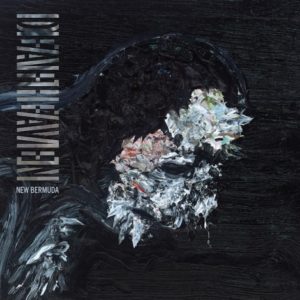
51. Deafheaven – New Bermuda (2015)
There is no arguing the impact Deafheaven’s Sunbather had on bringing extreme music to the mainstream. It’s also impossible to argue how well the California group married black metal with dreamy shoegaze. However, the argument can be made their second full-length record was a more complete and intense effort—at least for metal’s faithful.
New Bermuda peeled back some of the glimmering sheen of Sunbather and placed the spotlight on the gritty tone of their extreme metal influences. George Clarke’s vocals are significantly more incisive, there is Slayer-esque riffing and chugging alongside Built to Spill atmosphere. Deafheaven took their formula for Sunbather and not only showed lightning could strike twice, but show it could be channeled and morphed into anyway they see fit. – Cody Davis
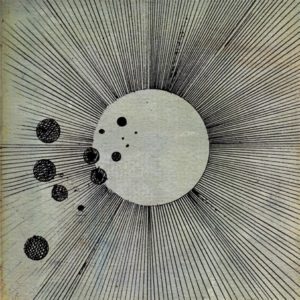
50. Flying Lotus – Cosmogramma (2010)
Flying Lotus was one of the hardchargers of Los Angeles’s legendary hip hop showcase, Low End Theory, which billed itself as “experimental hip-hop.” But listening to the psychedelics on Cosmogramma, Flying Lotus seemed to know exactly what he was doing. Inspired by the passing of his mother as well as the work of his aunt, jazz pianist Alice Coltrane, Flying Lotus’s second record is a blast of vintage science fiction electronica/jazz/soul/funk. There are the electro bloops that Los Angeles’ eastside loves so much melded with live string and horn sections. Thom Yorke even makes a ghostly appearance on “…And the World Laughs with You.” Cosmogramma literally came out in 2010 but overall the record feels like it’s rejecting the limitations of a static existence in a given time and place and is traversing the time/space continuum, collecting influence from various time periods of jazz and electronica and is creating influence for periods to come. In fact, almost any praise of Cosmogramma can basically be followed with an emphatic “maaan!” – Paul Glanting
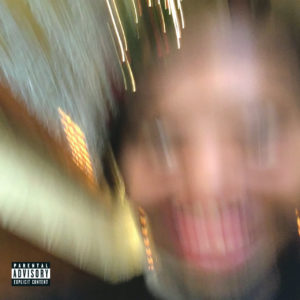
49. Earl Sweatshirt – Some Rap Songs (2018)
I was once asked to describe just what it is that Earl Sweatshirt does and I realized how difficult it is to do so. Earl’s music is both woozy and deadpan, frank and elusive, and altogether remarkable. Some Rap Songs perfectly coalesced Earl’s straight-faced delivery with laidback bordering on lethargic music and honest, bracing lyrics about growing up, depression, and grief. So much of Some Rap Songs is remarkably touching. Here Earl is open and plainspoken, allowing for a nuanced view of Black masculinity that does not seek to deny vulnerability, but rather acknowledges that space for growth and renewal. – Jackie Im

48. Yob – Clearing the Path to Ascend (2014)
It’s time to wake up… Yob has been one of metal’s most preternatural metal bands of the last quarter century. The Oregonian doom trio led by Mike Scheidt breathed new life into their discography with the masterful Clearing the Path to Ascend. Their four-song opus won critical acclaim from metal media and even saw them break through into mainstream consciousness back in 2014.
Clearing the Path to Ascend transcends rather than ascends. Yob, at the time, was already an enduring acting in metal. Their flawless execution on this album put them in their own universe—a sprawling, inter-dimensional landscape of soaring melody and doomed devastation The album closes on one of heavy metal’s all-time greatest moments, the 18-minute “Marrow.” The emotive and earth-shaking finale is a poignant exclamation point on Yob’s undisputed crescendo. – Cody Davis

47. Beach House – Bloom (2012)
If there’s one music video from this decade that got under my skin, it’s the Eric Wareheim-directed video for Beach House’s “Wishes.” That video takes a relatively mundane scene—a high school sporting match—and transforms it into something wondrously, transcendently strange. That Lynchian tendency is at play throughout Bloom, a record that looks at memories—suburban adolescence in “Wild,” a broken relationship in “Other People”—through an otherworldly, kaleidoscopic lens. Musically, it’s serene and beautiful, evoking a mental landscape where all our memories—good and bad, beautiful and painful—can live on, untouched, forever. – Sam Prickett
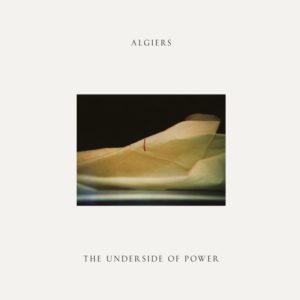
46. Algiers – The Underside of Power (2017)
It’s not a new idea to make a political record also a sonically great record, but it’s really fucking hard. Algiers take the first and foremost rule of great art, which is a profound and unwavering agnosticism to genre in pursuit of aesthetic, and from that develop an intoxicating potpourri fusing industrial, post-punk, and noise to gospel, R&B, blues, and funk. Like a perfect marriage of Throbbing Gristle, Depeche Mode and Portishead producing music every bit the equal of those two rightfully canonical bands with righteous and necessary radical politics to boot, Algiers feels like a band that can’t possibly be from now. It feels like this record must be decades old, an unearthed classic. But it’s not. The classic is now. – Langdon Hickman

45. Jamie xx – In Colour (2015)
Branching out from his bandmates in The xx, Jamie xx creates a soundscape of his own on In Colour. Essentially an elevated form of house and dance music, each track blends Jamie’s melancholic instrumentals with enticing beats and refreshing sample choices. Enlisting his bandmate Romy Croft on “Loud Places” and and “SeeSaw” adds clarity to the album, adding a delicate voice and tool for navigation through Jamie’s mind. “I Know There’s Gonna Be (Good Times)” pairs Young Thug with Popcaan for a tightly bound banger, holding all the elements of a perfect club hit. Jamie’s brand of pop is carefully thought out, each detail clearly considered and measured before it’s considered finished. – Virginia Croft
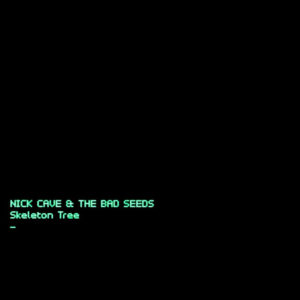
44. Nick Cave & the Bad Seeds – Skeleton Tree (2016)
Nick Cave & the Bad Seeds’ decade was defined by a trilogy of albums that scarcely resemble anything in their past. At their most earthy and grounded was 2013’s grittier Push the Sky Away, and at their most ethereal, the lengthy and deeply sad Ghosteen from last year. Between these two poles is Skeleton Tree, an album that’s harder to define and, for that matter, to contextualize. Written mostly before the death of Cave’s son Arthur but released afterward, it inevitably arrived in the shadow of tragedy, an album defined by it though not necessarily being about it. Yet those phantoms are inescapable, whether through Cave’s tearfully vulnerable performance on “I Need You” or in the abrasive and spectral arrangements of “Jesus Alone” and “Anthrocene.” Skeleton Tree is both deeply personal and largely intangible, a complicated work that feels like it exists because its creator needed it to. – Jeff Terich
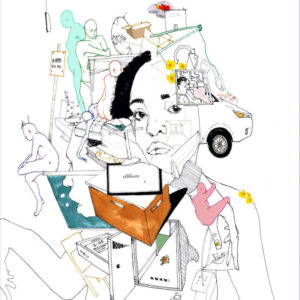
43. Noname – Room 25 (2018)
Make no mistake, Noname is an author; it just so happens she knows how to rap. Room 25 was one of our favorite hip-hop albums of 2018 and it has ascended the ranks to one of the 2010’s finest efforts as well. Noname’s tales are always front and center across Room 25, a record that should be considered literature; her poetic ruminations are hypnotic and make the melodic production stand at attention and fulfill the scoring duties of her story arcs. Her intent to narrate the world is clear as she regularly eschews de facto rhymes in favor of telling a story with cascading clarity. The MC/Poet/public library advocate may not be bodying any rap battles but she’ll certainly be able to point out her opponents’ reliance on antiquated stereotypes, debunk their hyperbolic boasts and force them to reflect on their own insecurities as a means of setting them free. – Paul Glanting

42. Father John Misty – I Love You Honeybear (2015)
A songwriter as sarcastic and cynical as Josh Tillman might not be the most likely candidate to write a profoundly real album about love, but it’s precisely because of who he is that I Love You Honeybear manages to cut so deep. An 11-track journey, mostly internal, through the process of falling in love and how much that utterly and truly fucks you up, Honeybear is a warts-and-all celebration of giving yourself wholly to someone else, even if you don’t think you deserve it, even if you’re pretty sure you don’t. Tillman gets his hands dirty, picking apart an institution based on resource scarcity for the sake of trying to make sense of its inherent absurdity, even though ultimately he’s just as much a sucker as the rest of us. And on closer inspection, the more absurd it looks, like how the song about the frustrations with technological communication somehow feels the most tender (“True Affection”), or how the idea of getting to know someone at their most intimate level almost surely means you’ll lose their affection (“The Ideal Husband”). It’s a dizzying and confusing examination of something that can’t be viewed logically, best as Tillman tries, and the honesty he taps into—coupled with the best and most creative arrangements of his career—lead to a listen as gleefully outrageous as it is real and affecting. All because he went to the store one day. – Jeff Terich
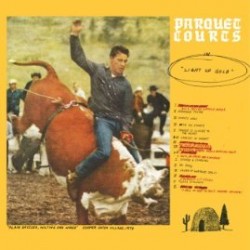
41. Parquet Courts – Light Up Gold (2013)
For most, Light Up Gold served as the introduction to Parquet Courts; even now, their cassette-only debut American Specialties feels mostly vestigial. It’s hilarious, then, that this record kicks off with Austin Brown lamenting that he’s already too good to give us even a minute of his time. That caustic disaffection comes to define many of the album’s 15 tracks, many of which clock in at barely over 60 seconds. What we get in those dense songs are quick sketches of the American heartland—desolate discount malls, jersey-clad Baptist choirs, anti-meth murals. It’s a bleak enough portrait to make the album’s sarcastic distance immediately understandable—why care, if your only option is a career in combat? Why not get so stoned that your biggest concern becomes a choice between Swedish fish, roasted peanuts or licorice? Parquet Courts don’t offer many other options for a reprieve from all this—their politics would come to the forefront later—but their ability to boil down American rot into a series of precise, catchy vignettes makes the album’s opening claim not all that outlandish. – Sam Prickett

40. Björk – Vulnicura (2015)
After a couple of mostly inessential albums, Björk returned in 2015 with the brokenhearted Vulnicura, an album so devastated that it’s at times difficult to listen to. The music here centers on her breakup with longtime partner Matthew Barney, and is often pitch-black in its despair. Who better to bring onboard, then, than Arca and The Haxan Cloak, both of whom imbue the record with desolate, cavernous textures that feel even more austere than the wintry landscape of Homogenic. The album’s meant to be therapeutic—its title is derived from Latin, meaning “cure for wounds”—and at its best pushes through her grief into something graceful and transcendent. “Moments of clarity are so rare / I better document this,” Björk sings on opening track “Stonemilker.” We’re glad she did. – Sam Prickett

39. Pusha T – DAYTONA (2018)
DAYTONA is seven hits of pure Pusha T. The opening salvo in Kanye West’s “five albums in five weeks” experiment last summer found rapper and producer in top form. Pusha’s delivery was so sharp that even a “yeugh!” could draw blood, while West—regrettable MAGA-hatted verse on “What Would Meek Do?” aside—was firmly in chop-up-the-beats-Kanye mode.
It’s only a cliché that Inuit languages have hundreds of words for snow, but it’s damn near a verifiable fact that there’s no limit to the number of ways Pusha can rap about his drug-dealing past, which he does with gleeful abandon on “If You Know You Know” and “The Games We Play” (“This is the drug money your ex-n**** claim he makes,” he boasts on the latter). He’s dealing death, too, swearing vengeance upon a friend’s grave on “Santeria” and digging a shallow one for Drake on “Infrared”. DAYTONA wasn’t 2018’s leanest rap record—Tierra Whack rushed through 15 songs in as many minutes on Whack World—but it was unquestionably one of the decade’s meanest. – Jacob Nierenberg
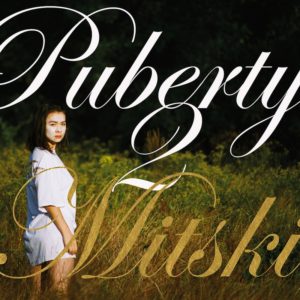
38. Mitski – Puberty 2 (2016)
There is a poignant thread that slithers through all of Mitski‘s love songs on Puberty 2, in that there appears to be no lover anywhere in the chilly vicinity. It isn’t even that the flame has left, it’s that there never was one and in its place sits only towering loneliness. The record is a near perfect blend of melancholic pining and distorted roars. Mitski conveys an endearing narrator that is also genuinely awkward and ambivalent about how to navigate the enigmatic ciphers of social life (which can happen when you relocate to over 13 countries growing up). Even when the allegory wallops us over the head, as is the case on the self-explanatory “I Bet on Losing Dogs,” the snarky thin veil just works so well at capturing the visceral weight of defeat. Puberty 2 is immensely literary and its narratives like “Thursday Girl” and “Fireworks” utilize the senses in a way that makes Mitski’s serene magical realism feel tangible. Alongside contemporaries like Frank Ocean, Mitski is helping to reignite the singer-songwriter-storyteller troika. – Paul Glanting

37. Japandroids – Celebration Rock (2012)
Maybe this is its own cliché, but look: It’s all in the title on this one. It begins and ends with fireworks for a reason. This is rock music—genuine, old-fashioned, guitar/drums/shouting rock music—that makes just staying alive sound like something worth celebrating, and makes managing to grow up and get better and take care of yourself sound like the triumph it is. The miracle of Japandroids on this record is that these two guys—just a drummer and a guitarist, both singing at the top of their lungs—can make so much sound by themselves, and that they can make it sound like fun. And the closing three songs here are, I swear to God, the best three-song run on a rock record this century. – Ben Dickerson
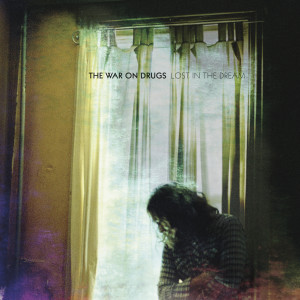
36. The War on Drugs – Lost in the Dream (2014)
To read about the making of Lost in the Dream is to understand the toll it took on Adam Granduciel. The War on Drugs mastermind spent a year wrestling with depression, anxiety and isolation so severe that days would pass without him leaving the house. One only has to look at the song titles—“Under the Pressure,” “Suffering,” “Disappearing”—to get a sense of what he was going through.
And yet, to listen to Lost in the Dream isn’t just to be pulled into Granduciel’s darkness, but to hear how he found his way back. Songs like “Red Eyes” and “Burning” offer the
kind of guitar heroics that would make Bruce Springsteen, Tom Petty and Neil Young proud, but every bit as essential to the record are the moments where Granduciel doesn’t hide his pain and doubt: “I’m in my finest hour / Can I be more than just a fool?” he sings on the rip-roaring “An Ocean in Between the Waves”. Simply put, there’s no other album this decade that will make you believe in rock ‘n’ roll, or that music can save your mortal soul, than Lost in the Dream. – Jacob Nierenberg

35. The National – High Violet (2010)
To think that people still write The National off as “boring.” Sure, frontman Matt Berninger sings about “boring” stuff like fraying relationships and soul-sucking jobs, but that’s real life, and real life is boring. It’s certainly a lot more relatable than getting shitfaced with The Strokes or Yeah Yeah Yeahs—and no small part of why, unlike most of their peers in NYC’s indie rock scene in the early 2000s, The National actually got better as the decade went on.
The band entered the new decade with High Violet, their lushest and most vibrant work to date. Berninger’s romantic and economic anxieties are still front and center, but they’re given dimension by the Dessner brothers’ orchestral compositions: “Sorrow” is a torch song to depression (“I don’t wanna get over you,” Berninger mumbles); the domestic drama of “Afraid of Everyone” ends in a sonic tempest that could induce a panic attack; “Bloodbuzz Ohio”, the band’s best song, makes drunken reverie sound like eternal glory. The lives of adults can be boring—not to mention, un-magnificent—but few bands depict its highs and lows as richly as The National does on High Violet. It’s an album to grow old with. – Jacob Nierenberg

34. Thou – Magus (2018)
Thou’s Bryan Funck once said that he considers Thou more of a melancholy band than an angry one, which perhaps isn’t readily apparent when one is first faced with the colossal density of their crushing metal compositions. Listen a little closer, though, and it’s clear they’ve come a long way since “Smoke Pigs.” Magus, their fifth full-length album, is the full spectrum of the New Orleans band captured in 11 lengthy and often brutal tracks, challenging every notion of what a metal album can be without sacrificing one ounce of their unbearably titanic weight. It’s an album at turns mournful and punishing, and in its greatest peaks, accessible (“The Changeling Prince”) and harrowing (“Supremacy”), using their epic dirges as a platform for commentary on tangible, flesh-and-blood concerns of existence and the self—which, yeah, often are heaped in confusion and despair. There’s also something to be found on Magus that’s sadly too-often absent from metal of their ilk: hope. Amid the turmoil both internal and sociopolitical, Thou finds a path to salvation on “In the Kingdom of Meaning”: “We have sung our anthems of pain/We refuse to exist in our despair/We will find inner sanctum/And so we shall prevail.” – Jeff Terich
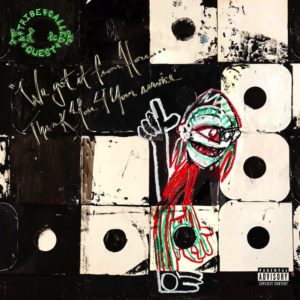
33. A Tribe Called Quest – We Got It From Here…Thank You 4 Your Service (2016)
While seemingly conjured out of nearly 20 years of nothing and nowhere, in reality this album is bookended by terror and horror. The former we find in its genesis, when Tribe came together on the night of the November 2015 Paris attacks to perform on The Tonight Show with Jimmy Fallon, then decamped to Q-Tip’s home studio to make new music off of that energy. The latter came on its release date, one week removed from Donald Trump’s shock election to the American presidency. In between, the actual music addressed Black excellence (and absence from traditionally white arenas of same) not just through sociopolitical critiques and musical skill, but as a eulogy for Phife Dawg and a stamp of approval for Jabari White. It’s a bell curve of emotion, simultaneously all dark clouds and silver linings. – Adam Blyweiss
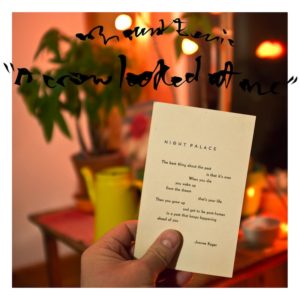
32. Mount Eerie – A Crow Looked At Me (2015)
“When real death enters the house/ all poetry is dumb.”
I wish I could stop talking about this album right here, because nothing else is ever going to come close to summarizing the painful accuracy of this album’s intent and impact. A Crow Looked At Me is a powerful meditation on loss. An album focused not necessarily on sonic ambition or fidelity, but rather instead on its tragic narrative—a theme that has been discussed before, but never with such immediate agency and intimacy. After the loss of his wife, Phil Elverum wrote A Crow Looked at Me as a stunning and brutal interrogation of loss and grief. It pulls absolutely no punches within its lyrics and captures a headspace so raw and tangible that it physically hurts to listen to. Among beautiful and hauntingly small compositions, this work stands apart not just for its integrity and sheer rawness, but for Elverum’s willing exploration into the most painful of all human emotions, loss itself. – Brian Roesler
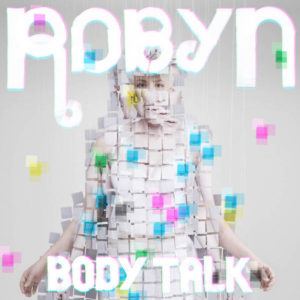
31. Robyn – Body Talk (2010)
The fact that Robyn’s Body Talk album was a compilation of three separately released EPs works against the idea of it having a comprehensible storyline. But listen closer: Hidden within its 15 enchanting confections is a sneaky narrative about the politics of dancing. Hell, it’s almost a song cycle. Robyn starts off by solving the prickly hurt of lost love in “Dancing on My Own”; from there she becomes a physically addicted “Fembot” who proclaims her belief that she’s “Indestructible.” Then she gradually embraces humanism, rejecting “Stockholm syndrome in misery” in “Love Hurts” and establishing her own terms on “Hang with Me.” By the time she gets to the wonderful “Call Your Girlfriend” she’s encouraging her new lover to let his old girl down with some grade-A new age bullshit: “Tell her that the only way her heart will mend is when she learns to love again.” Nothing that gleefully cynical can possibly be bad for you. – Paul Pearson
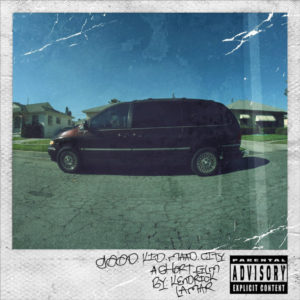
30. Kendrick Lamar – good kid, m.A.A.d. city (2012)
It’s confirming to know that even in the days and weeks immediately following the release of this album, we all knew Kendrick was going to be a star. Section.80 was great but this record was a level beyond, with perhaps one of the best lead singles in hip-hop history and the same shine from Dr. Dre that he gave a young NWA, a young Snoop Dogg, a young Eminem. The sonics were lush, artful, rich, but maintained a connection to the necessary boom-bap of great rap. And Kendrick didn’t slouch either, delivering a concept album suite deliberately meant to be an emotionalist parallel to Dre’s own early work about life in their shared streets of Compton, focusing as much on common people and the losses of that life as a defense of why it came to be in the first place. We were right then, all of us, every fan and every publication, and every album after has only been another line underscoring what we all felt with this record. It’s perfect hip-hop. – Langdon Hickman

29. D’Angelo and the Vanguard – Black Messiah (2014)
Well before Black Messiah ever saw release, The Roots’ Questlove elevated it to legendary status, comparing it to the likes of Sly and the Family Stone’s There’s a Riot Going On and Miles Davis’ On the Corner. Here’s the thing about that: He wasn’t wrong. Arriving a long 14 years after 2000’s groundbreaking Voodoo, Michael Eugene Archer reestablished himself as contemporary R&B’s psychedelic visionary, reemerging with a set of songs both timeless and timely, steeped in the never-ending sociopolitical conflicts of our era without forgetting how to have a damn good time in the process. “Sugah Daddy” is one such jam session, as much about hearing the Virginia-born singer channel Prince at his funkiest as it is about hearing his band, The Vanguard, show off their chops. But a darkness still hangs heavy over Black Messiah, whether in the furious psych-funk of “1,000 Deaths” or the Black Lives Matter-channeling “The Charade” (“All we wanted was a chance to talk/’stead we ended up outlined in chalk“). If it took 14 years to materialize, D’Angelo made sure to say everything he needed to—joy, sorrow, love or simply feeling the vibe. Black Messiah is an experience as much as a statement, and D’Angelo’s first line of “Ain’t That Easy” also happens to make for good listening instructions: “Take a toke of smoke from me as you dream inside.” – Jeff Terich

28. Solange – A Seat at the Table (2016)
In the last few months of the Obama presidency, it became increasingly clear that the myth of American being post-racial was always a farce. It was a lie told by the ones who could ignore the many microaggressions and straight up aggressions that mark the days and hours of the communities of color in America. On A Seat at the Table, Solange articulated these frustrations on songs like “Mad,” “Don’t Touch My Hair” and “Weary,” laying bare the tiny nicks that try to cut down Black people, and in particular, Black women. Yet she remains strong and claims her space and her voice. Throughout A Seat at the Table, Solange sings of Black empowerment and sisterhood; she sings of the personal, the political, on race and identity at a time when American sorely needed to have these conversations. Most importantly and powerfully, she sings for Black people: “for us—this shit is for us.” – Jackie Im
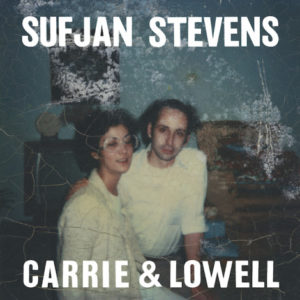
27. Sufjan Stevens – Carrie and Lowell (2015)
Confession: I started this decade a dyed-in-the-wool Sufjan hater, finding his work too twee and kitschy for my taste. There have been several records since that made me eat crow on that sentiment, but this was the record that converted me into an open and unabashed fan. Converting the tremendous trauma and grief of the loss of his parents into a set of mortal meditations, he transforms his usual kitsch into a tool to achieve a level of sonic fragility that perfectly matches the thin sheet of ice over the impossible darkness of the lake of grief beneath. The record escapes the solipsism of pain not in leaps but in sighs, clutching icons of faith that are meant to ward off this darkness but in the depths of that suffering begin at last to fail. – Langdon Hickman

26. Angel Olsen – All Mirrors (2019)
Angel Olsen’s music is often at its most potent when stripped bare—her voice is her most powerful instrument, and paired with a few simple plucks or strums she can draw out emotions that some of us didn’t even know we could feel. That’s how All Mirrors could have been released, and in fact there’s a version that exists with little more than those two basic elements. Instead, for her fourth album Olsen took on a much more ambitious project, adding intricate string arrangements and glowing sheets of synthesizer over what could have been perfectly good, simple pop songs. What results instead is an entire alternate world where Olsen embraces an elegant, gothic darkness, her ornate scores propelling everyday heartbreak and isolation into a grand drama. And yet, amid the tempest that surrounds her, Olsen’s still the most devastating presence here, as on “Lark,” where her climactic yelps of “What about my dreams? What about the heart?” cut like a dagger through a ribcage. The mirror image of this LP is a simpler and quiet affair, which will eventually see the light of day, but there’s no usurping the throne from this brilliant Queen of a glittering, surreal underworld. – Jeff Terich
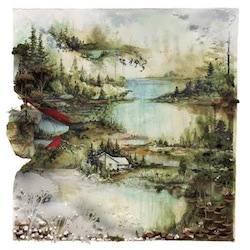
25. Bon Iver – Bon Iver (2011)
Full of sorrow and the deepest of emotions, Bon Iver introduces a mood board of defeat and despair. Each track represents a place, with such intricate instrumentations and attention to detail that the songs have a transformative quality to them. The album is also much more horn-heavy than Bon Iver’s debut, giving the tracks a darker, more haunting quality than the simplicity that his acoustic guitar once created. By the end, there’s an ounce of hope on closer “Beth/Rest,” but the special element of Bon Iver is that there’s no pressure to hurry up and get better—it’s a tool for taking your time, and being okay when it feels true. – Virginia Croft
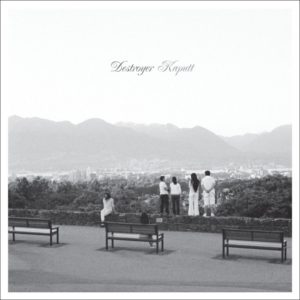
24. Destroyer – Kaputt (2011)
Kaputt manages to sound opulent without ever raising its voice. Dan Bejar’s ninth Destroyer album could sneak past you if you let it. Its lush, ‘80s pop-inspired instrumentation seems ready-made for passive listening—not subdued, necessarily, but mannered. It’s the record that introduced Bejar’s music to the disaffected Urban Outfitters crowd, which makes a certain amount of sense—if his previous albums, particularly Destroyer’s Rubies, taught us anything, it’s that he’s usually the coolest person in the room, even when he’s also the drunkest. Here, he’s mostly an almost-whispered presence, even when delivering deadpan, hilarious lines (“I sent a message in a bottle to the press / It said, ‘Don’t be ashamed or disgusted with yourselves,’” from “Blue Eyes”), or angry monologues about the pervasiveness of American racism (“Four more years, four more years / Four hundred more years of this shit, fuck it,” from “Suicide Demo for Kara Walker,” co-written by Walker). It’s a gorgeous, easy-listening record, but Bejar’s songwriting, as always, has razor-sharp teeth. – Sam Prickett
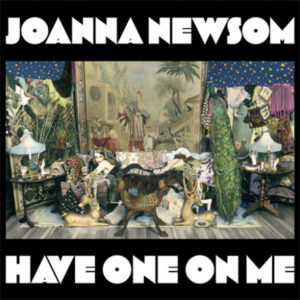
23. Joanna Newsom – Have One On Me (2010)
In an interview with The New York Times leading up to the release of Have One On Me, Joanna Newsom called it her “California singer-songwriter album,” and it’s hard to deny hearing the influence of the Golden State in the warm and earthy songs. As a fellow Californian, I can’t help but hear in her music the sparkling Yuba River, fog descending the hills and redwoods, the artistic enclaves that still pepper the coast, and the expansive, golden light of Southern California.
Newsom’s talent is undeniable and breathtaking and after the ambitious Ys, Have One On Me was a bit of a refreshing turn of course, but still no less ambitious. While much of Ys seemed so cosmic in scope and, at times, lyrically opaque, the songs on Have One On Me were often more direct speaking on love (falling in and out of it), home (leaving and returning), camaraderie and kinship. Always a stunning lyricist, songs like “Good Intentions Paving Company”—a song that invokes Joni Mitchell’s freewheeling Court and Spark—are relatable not through cliche but through the uniqueness of her language (the crushing simplicity of “I fell for you, honey / easy as falling asleep” is one of many examples). Even in songs whose meanings remain elusive and still cosmic in scope, Newsom’s affective performance manages to cleave hearts in two and instill the personal in the mysteries and the mythical. – Jackie Im

22. My Bloody Valentine – m b v (2013)
These decade lists have been an exciting time for all of us at Treble. Writing, listening and debating, drinking mugs two-handedly in matching sweaters (we all sit at a big round table, it’s very cute). When it came time to revisit My Bloody Valentine’s overdue successor to Loveless, a quick gloss over the Wikipedia page had us reminiscing on Ludovic Hunter-Tilney’s quickly rescinded assertion of m b v sounding like a Loveless 2.0. “Ho ho ho!” how we all laughed. “‘Loveless 2’, you say, what fun!” But let’s take a second to think about that claim. Even if m b v really was “Loveless 2,” the mere fact that My Bloody Valentine’s long-awaited follow up was being coined as “Loveless 2” is an absolute miracle in itself. And guess what: m b v isn’t Loveless 2, it’s an entirely individual entity, floating in a delicate fractal pop dissonance that in part defines 21st century shoegaze itself. Call it a sequel, call it a fluke, m b v is undoubtedly the follow up of the decade. – Patrick Pilch
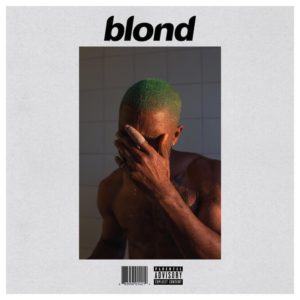
21. Frank Ocean – Blonde (2016)
Blonde is the work of a true auteur, an unabashed amalgamation of both lyrical genius and eccentric sonic fortitude. More than that, however, Blonde is a documentation of a time that has slipped by us all. The album’s softness, vulnerability and unwavering commitment to its own style has garnered the birth of its own aesthetic—one of love, loss, and boredom. Experimentation was the spine of Blonde, greatly featured on even its shortest interludes such as “Close to You,” a Stevie Wonder reimagining with drone-influenced snippets of greatness. This vision permeated its powerhouse R&B tracks like “Nights” and “White Ferrari,” both of which stitch into their tapestry Frank’s established soundscapes, elevating the discourse of dreamlike loneliness that’s found throughout Ocean’s prior efforts. Blonde allows listeners to wonder, to dream, to fail, to be bitter and coarse. It is an embrace of the humanity that surrounds us, it is gentle and it is sweet. It’s everything we cannot be, which is why it’s so damn important. – Brian Roesler
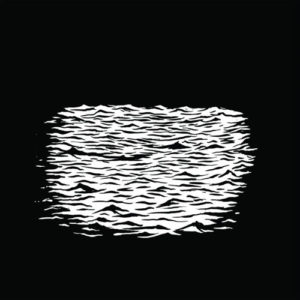
20. Vince Staples – Summertime 06 (2015)
Violence hangs over Vince Staples’s first album like a layer of smog: You aren’t necessarily going to choke on it, but you easily could, and the accretion of internal damage from constant exposure may ultimately lead to a fate more grim than sudden death. Over 20 tracks of skeletal production that occasionally nods at existing sounds (cloud rap in “Lift Me Up,” trap on “Señorita,” horrorcore with “Street Punks” and “C.N.B.”) but largely creates a unique neo-noir atmosphere, Staples tells incredibly detailed stories of life, love, anger and death in Ramona Park under the looming systemic socioeconomic oppression of Black America. And in exploring this broad range of emotion, Staples never lets us forget that all of it could be cut short at a moment’s notice. – Liam Green
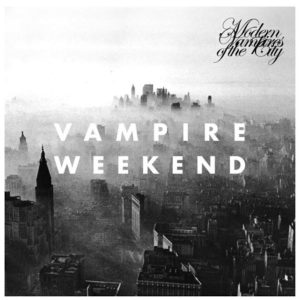
19. Vampire Weekend – Modern Vampires of the City (2013)
Vampire Weekend have gotten their fair share of ink for being cerebral, the Columbia grads with their literary aspirations and their eclectic influences, but their third record is their best in large part because it’s their most affecting. It’s not traditionally sentimental or anything; Vampire Weekend have never really been into confessionals, really, and their lyrics trend more toward character study than self-catalog. But on Modern Vampires of the City, Ezra Koenig’s portraits of privilege grow more vivid, more lived-in than they’d ever been, no longer subjects for lessons but objects of empathy. Emotionally, it’s both rich and varied from song to song, as when they move from the turbulence of “Diane Young” to the wistful melancholy of “Step” on the very next song.
But then, maybe melancholy is underneath it all. Modern Vampires feels like a work deeply concerned with getting older and with the faith and fear ingrained in the process. Koenig goes from “Hold me in your everlasting to arms” to “The faithless, they don’t love you” in a four-song stretch, both clinging to and drifting away from faith. This album yearns, you know? It’s searching; it’s pleading with the world for there to be more than it seems. “Hannah Hunt,” maybe the band’s best song, puts it best, as Koenig’s narrator and the title character travel across an empty nation to find themselves empty, and as pensive drums and pianos give way to a shattering indie rock coda, Koenig wails, “If I can’t trust you, then, damn it, Hannah/There’s no future, there’s no answer.” Because all we have is each other, right? And as the world gets bigger around us, as we see more of it, you can only choose to believe that or ignore it. – Ben Dickerson
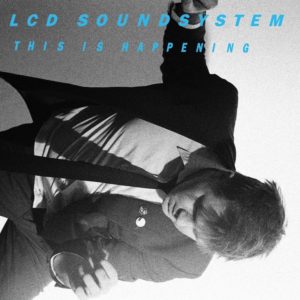
18. LCD Soundsystem – This Is Happening (2010)
Excepting their earliest big singles “Losing My Edge” and “Daft Punk is Playing at My House,” LCD Soundsystem’s music has never really been calculated to storm charts as much as to invade headphones and dancefloor PAs. Any success was organic, any accolades hard-earned. So particular words from James Murphy at the midpoint of their third and last great LP—“You wanted a hit/But maybe we don’t do hits/I try and try/It ends up feeling kind of wrong”—form the basis for any review of it. This is clear from opening cut “Dance Yrself Clean,” a woodblock-tapping crawl that blooms from into skronk and stomp. The narratives on This is Happening are less specific, the balladry at moments approaching the more traditional rock-band sounds of fellow New Yorkers like (gasp!) The Strokes. The dissonant, even base pop (“Drunk Girls”) and wiggle (“One Touch”) sharing space with these have ties to Bowie, Talking Heads, and Brian Eno shared between them that are even more naked and obvious than those found on LCD’s prior two LPs. The New York band’s most insular album to this point in their career—a mark American Dream would sadly and easily pass—is also their most song- and story-based one, as opposed to another new chapter of exclusively grooves. They don’t exactly sound comfortable doing it. Then again, comfort was never the point. – Adam Blyweiss
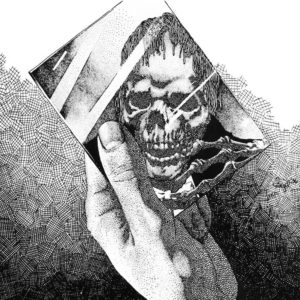
17. Oneohtrix Point Never – Replica (2011)
Daniel Lopatin’s had a more eventful decade than most, having made beats for ANOHNI’s anti-imperialist bangers, scoring the anxiety-inducing Uncut Gems and having produced a number of concept-bound full-lengths under his own solo project, Oneohtrix Point Never. They’re all different enough that naming a best among them is arguable—comparing the uncanny valley choirs of R Plus Seven to the alien industrial freakouts of Garden of Delete is an Apples-to-Commodores comparison—though none feels quite so miraculous a feat as Replica. Heavily composed of samples from television commercials from the ’80s (McDonald’s ads in “Child Soldier” and “Remember,” an MTV bumper in “Andro,” a particularly bizarre computer-come-to-life campaign from Wrigley’s in “Sleep Dealer”), Replica does the impossible in finding both beauty and humanity in the artificial and disposable. It’s the Sistine Chapel ceiling tiled with chunks of the Great Pacific Garbage Patch, a Venus De Milo constructed of styrofoam clamshells. Yet its most breathtaking moment is also its simplest; the title track is a gentle and mournful piece of sampladelic artistry built from a few simple piano loops. The raw materials can be swapped out, but Lopatin’s creations are inimitable. – Jeff Terich

16. Low – Double Negative (2018)
One of the most insufferable responses to Donald Trump’s election was the claim that it would make punk rock great again, as if music were enough to free children from cages or stop glaciers from melting. Double Negative—the haunting, harrowing twelfth album from slowcore lifers Low—is certainly not punk rock, and it’s not protest music, either; in fact, it’s barely recognizable as music. These songs sound toxic and ghoulish, like they were left to rot in Trump’s swamp, with vocals, drums and synthesizers all corroded beyond recognition.
Moments of musical clarity emerge from the wreckage, like the achingly beautiful “Fly” and “Always Up,” but these feel elegiac, less like glimmers of hope than memories of more hopeful times—and there’s no salvation to be found in the lyrics, when you can make them out: “It’s not the end, it’s just the end of hope,” Alan Sparhawk mewls on “Dancing and Fire”. It’s a crushingly bleak statement, especially when you remember that Low named their debut album I Could Live in Hope. Then again, I can’t think of a better way to describe Double Negative than the sound of living in hopelessness. – Jacob Nierenberg
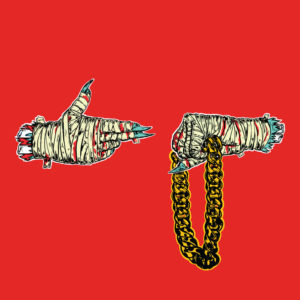
15. Run the Jewels – RTJ2 (2014)
There’s an argument to be made that tense, sometimes adversarial relationships can yield great albums, be it Rumours, Siamese Dream or the first couple of Oasis records. That argument is specious at best; for everything Run the Jewels 2 has going for it—the combined resume of two of the 21st century’s best rappers, beats that crack bones, too many “oh shit!” lyrical zingers to mention—it’s the camaraderie between Killer Mike and El-P that makes the duo’s second album more than a very good rap record but an actual modern classic. The shared admiration and respect between the two emcees is infectious, an asset that leads to teamwork and one-upsmanship. They bounce verses off each other in good-natured lyrical sparring matches, even when straight-faced and dead serious in the shadow of injustice (“Close Your Eyes (And Count to Fuck)”, featuring a rare and dynamic Zack de la Rocha guest verse). But when they’re simply riffing, like in “Oh My Darling (Don’t Cry)”, they sound like they’re having more fun than anyone who’s ever set foot in a recording studio. Tortured genius is fine and good, but genuine collaboration only brings out the best in us. Run the Jewels’ proof is right here. – Jeff Terich
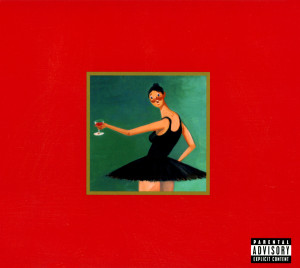
14. Kanye West – My Beautiful Dark Twisted Fantasy (2010)
Kanye West used to have a blog where he would post about art, architecture, exotic models, and absurd technology (e.g. jetpacks). Around the same time, Kanye declared in an interview that he never listened to rap music at home because he felt his apartment was too nice for rap. Delusional or brilliant, Kanye has long been obsessed with guffawing at reality; while he’s often dismissed as arrogant, his wild-eyed obsession with overfeeding his legacy has shoved hip-hop into new grandiose frontiers. Graduation is a great hip-hop record and 808s and Heartbreak is conceptually sound and showcased West’s bent for forging new territory, but My Beautiful Dark Twisted Fantasy was Kanye’s fine art. With MBDTF Kanye wanted to create an heirloom, a record that would be right at home at the Louvre. The record is an operatic epic, from the gospel choruses on “Dark Fantasy” to the symphonic maximalism on “All of the Lights” to the aggressively competitive posse cut “Monster.” Even the record’s creation has the alleles of legend: driven into seclusion after several public outbursts, Kanye set up shop in a secluded Hawaiian fortress of solitude and with the likes of Kid Cudi, Nicki Minaj, Bon Iver (to name a few), forged a studio-cum-hippie commune. Even for the Kanye skeptic, his opus is a requisite hip-hop record, an decadent piece of American art and, at the very least, an emblematic context to Mr. West’s perplexing output today. – Paul Glanting

13. Mitski – Be the Cowboy (2018)
When Mitski announced in June that she was taking an indefinite break from touring, it was hard to blame her. The 29-year-old released (and toured behind) a whopping five albums this decade, culminating with 2018’s Be the Cowboy. That record, Treble’s album of the year for 2018, is partially about the discipline and emotional distance mandated by a traveling musician’s lifestyle—see the jaunty standout “Nobody,” or the defiant “Geyser”—and partially a series of vignettes featuring characters struggling with emotional distance in their own lives. She does so with some concise, unpredictable compositions (”Why Didn’t You Stop Me” is a two-minute, off-kilter whirlwind) and some of the most gorgeous lyrics of her career (the regret-tinged, heartbreaking “Two Slow Dancers”). Take as much time as you need, Mitski. If Be the Cowboy proves anything, it’s that you’ve earned it. – Sam Prickett
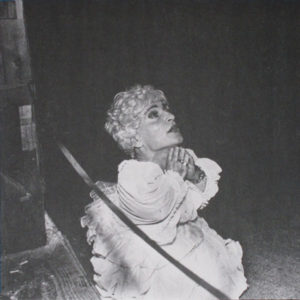
12. Deerhunter – Halcyon Digest (2010)
The first thing I think about when I think about Halcyon Digest is the ocean. I’m not just talking about the aquatic production, which is full of bubbles popping and waves crashing, but The second thing I think about when I think about Halcyon Digest is 1960s pop music. It’s in the way the guitars jam on one filthy riff or the melodies come to perfect final note. I think about the shuffling chords in “Don’t Cry” and the way the chorus resolves in “Helicopter.”
The third thing I think about when I think about Halcyon Digest is queerness and dysphoria. Bradford Cox is both queer and he has Marfan syndrome, two things that radically alter your relationship to your body. Most of the lyrics of Halcyon Digest reflect this: of finding your body totally alien, completely unsure of how it’s supposed to move or function or look. And yet the sound of Halcyon Digest is so beautiful, so completely unencumbered with the metaphysical crises that occur in the lines of these songs. Cox has said that the name refers to “the way people romanticize the past, even if it was horrific.” And we can hear that here. Under the joyful sounds of ’60s pop and rock are stories of violence and cruelty, but even more potently, stories of the atrocity of day-to-day life. – Ben Cohn
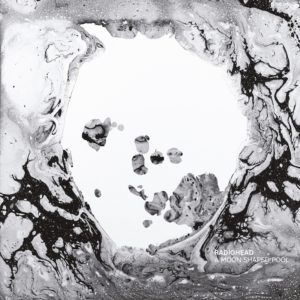
11. Radiohead – A Moon Shaped Pool (XL)
The space between In Rainbows and this record were not especially kind to Radiohead. They were at once accepted as part of the canon and made a laughing stock, records like King of Limbs (a good album, by the way) held up as examples of their waning ability. But patience is a virtue and the band, hard at work, sought to and eventually did successful prove those sentiments wrong. A Moon Shaped Pool is a mature album in the way all mature albums are, muted rather than indulging in the brightness and chaos of youth. But this maturity allows Radiohead to achieve the more constant and harried chaos of adulthood and beyond, when you realize nothing ever will make sense and it’s all just people getting on as best (or worst) as they can. Ending this record with the first studio recording of 20-year old deep-cut “True Love Waits” only after Thom Yorke’s separation from his dying partner only deepens the meditation on the confounding, painful mysteries of adult life. – Langdon Hickman
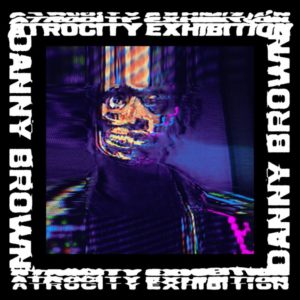
10. Danny Brown – Atrocity Exhibition (2016)
“A disquieting feature of this annual exhibition … was the marked preoccupation of the paintings with the theme of world cataclysm, as if these long-incarcerated patients had sensed some seismic upheaval within the minds of their doctors and nurses.” —J.G. Ballard, “The Atrocity Exhibition”
Danny Brown’s pitch-black 2016 masterpiece is almost unbearable in depicting how much its own maker’s life had gone awry before and during the album’s creation. Brown veers back and forth from the trauma of his past to ambivalence regarding the trappings of fame—and along the way depicts sexual-chemical hedonism in a stark, revolting light (particularly on “Downward Spiral” and “Golddust”). Frequent collaborator Paul White cloaks Brown’s brutal honesty in a swirl of post-punk, acid rock, jazz and techno (the samples often indistinguishable from the live instrumentation) that few other than Brown could rap over at all, let alone as expertly as he does. It’s a good thing Brown is in a better headspace now, as exemplified by this year’s punchline-rich uknowhatimsayin¿—but the visions of Atrocity Exhibition cannot be shaken and loom large over a decade characterized by overdose deaths. – Liam Green

9. Grouper – Ruins (2014)
We often say an album or song is haunting. It’s easy and sometimes reductive—and I’m just as guilty, here—and when describing music, it’s often something we say when words fail us. It’s how my dad described the melody of The Beatles’ “Yesterday,” when he introduced it to me when I was a kid. Grouper’s Ruins is haunting in a way that necessitates the use of the word. Describing its constituent parts—on the surface, the record is relatively sparse—gets us nowhere in terms of capturing Ruins, arguably Liz Harris’ finest achievement to date, which, if you’re at all familiar with her career, is saying something. And Ruins haunts the listener with the very real ghosts of memory, childhood, nostalgia, and loss, fulfilling music’s unique capacity for evoking the past almost as immediately as smell. The first time you listen to the album you may find it merely beautiful. But certain moments grow more resonant with each listen—the piano melodies on songs like “Labyrinth” and “Holding,” which unfold delicately and confidently, Harris’ shifting, wraithlike vocals on “Clearing,” even the barely perceptible thrum thrum thrum of “Made of Metal.” When given time, it becomes apparent just how much these moments linger, even and especially after you are finished listening to the record, forgotten and then recurring, as if Brian Eno’s famous description of the experience of listening to ambient music were mapped onto one spectacular record’s afterlife. – Tyler Dunston

8. Deafheaven – Sunbather (2013)
Yeah, Satan is cool, but have you ever had an emotional breakdown while listening to a song with blast beats? If you’ve listened to Sunbather, you probably have. As strong a start as the Bay Area metal band’s debut Roads to Judah was in 2011, Sunbather revealed Deafheaven as more than blackgaze iconoclasts but genuine visionaries, assigning black metal a beating, bloody heart and a human face, one unobscured by the ghoulish smears of corpse paint. From the triumphant opening chords of “Dream House,” Sunbather begins an emotional and melodic epic that not just challenges what black metal can be but more importantly who it’s for. And in this case, it’s everybody; if you didn’t have a metal-allergic friend in the past decade who didn’t say express at least curiosity for what Deafheaven were doing, then maybe your friends simply don’t listen to enough music. For once, the conversation changed from tired arguments about kvlt purity or (eyeroll) Burzum and were replaced with discussions of the subtleties of Kerry McCoy’s guitar textures, the nods to Built to Spill and Godspeed You! Black Emperor, or the sheer catharsis of George Clarke’s soul-baring screams. They slapped on some pink cover art, and with that, Deafheaven brought black metal out of the basement of a burned-out Fantoft, kicking and screaming, and into the 21st century. – Jeff Terich
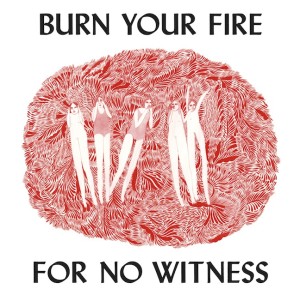
7. Angel Olsen – Burn Your Fire For No Witness (2014)
For an artist capable of both ambitious, orchestral pop works and emotionally crushing ballads, Angel Olsen has proven highly meme-able over the past decade. She’s turned “Unfucktheworld” into a slogan of sorts, found her likeness adoring Christmas wrapping paper (the label appears to be out of this, sorry), and made a misspelling of “broccoli” on a menu into a running gag. Never let it be said that “serious” singer/songwriters can’t also be funny.
Angel Olsen just also happens to tap into the moments of human frailty and hopelessness through which a simple melody can burrow under your skin and make you feel something you didn’t know was there. Her songs on Burn Your Fire For No Witness are catchy, rarely straightforward, but they’re always relatable—depictions of lived human experience rendered gorgeously, whether attempting to escape depression in the devastating “Windows,” committing to a solitary path in the haunting “White Fire” or catalyzing frustration into inspiration in “Stars.” The quotables come fast, the meaning runs deep, and happily-ever-afters are rarely part of the storyline. But Olsen still has the kind of wry sense of humor to turn lemons into lemonade. “Are you lonely too?” She asks. “High five! So am I.” – Jeff Terich
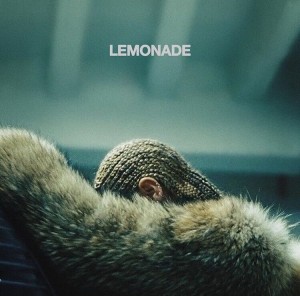
6. Beyoncé – Lemonade (2016)
There is no one better at commanding attention than Beyoncé. When word got out that there would be something on HBO connected to Beyoncé, it seemed like we all gathered around, texted one another for HBO Go passwords or queued up their torrents to witness just what she was up to. Lemonade is an album in two acts: the first an incendiary screed on infidelity, with a baseball bat in her hands, ready to set the city on fire with her rage and betrayal. A lightning rod of emotion that was not always shown previously, the first act of Lemonade was the conversation starter. We whispered, “what did Jay do?” Internet sleuths combed through images to try to find just who was Becky with the good hair.
The second act is more layered. It grapples with love and marriage, the breaks and the healing that comes with a long-term relationship with two complex people. It also grapples with her family, her relationship with her father, her familial history in New Orleans and Houston, and a history of Black people in America. The second act of Lemonade is an excavation of history and relationships, exploring how generations of trauma and success can affect the present. It’s a celebration of Black women and the strength of their kinship. Taken together, the two acts of Lemonade acknowledges the complexity of human relationships, how rage can live next to compassion, how trauma can inform glory, and the largess of healing and mutual care. – Jackie Im
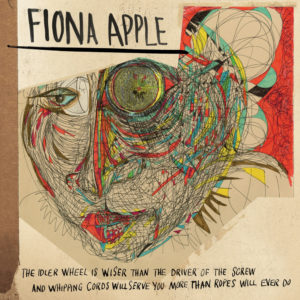
5. Fiona Apple – The Idler Wheel Is Wiser Than the Driver of the Screw and Whipping Cords Will Serve You More Than Ropes Will Ever Do (2012)
Fiona Apple is in a large, open space with a celesta. She has her lyrics accompanying her (though most of them read as expert-level poems, stuffed with tongue-twisting double-entendres and stark observations and mental mutilations). When she plays, what styles is she pulling from? Ragtime? Barrelhouse? Musicals? Decades of technical but absurdly emotive jazz stylings? There are no ballads. Hardly any accompanying arrangements (besides a kora, timpani, and human thighs, among minimal others). The Idler Wheel could have been written centuries ago—the music is love-sick, critical, sometimes oddly humorous and self-deprecating. It uses very old instruments in a way which sounds fresh and nostalgic simultaneously. Apple’s vocal range had never sounded as titanic and flexible than it did on The Idler Wheel. She cartwheels around traditional forms of composition, while remaining steady, filling each nook of each song with memorable howls, cries, and one-liners. It is not an album you listen to lightly; it is not an album whose songs you might find on a playlist. It is an entire document, one extended work of art lightyears away from her 1996 jazz-pop masterpiece Tidal. The conundrum which comes affixed to any music writer’s approach is remaining objective (or at least fair and critical) to pieces of music we have fostered emotional attachments to and with. How does one remain objective about an album as idiosyncratic and complex as The Idler Wheel? Objectively it is a flawless record. The only real “flaw” is that there are no scraps lying around, no blueprints to show how Apple came to the master stroke that The Idler Wheel is. Her process remains mysterious, her persona spontaneous, her music nearly unapproachable. But when it hits, when you give in to the power of these songs, Fiona Apple leaves you feeling stupefied. It cannot be done like this again. – Timothy Michalik
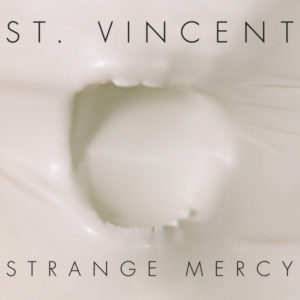
4. St. Vincent – Strange Mercy (2011)
Most St. Vincent albums feel like they come from behind a mask. There’s the wide-eyed, secretly venomous ingenue of Marry Me and Actor, for example, or the imperious, sex-positive cult leader of St. Vincent and Masseduction. But Strange Mercy feels in many ways like the least affected of Annie Clark’s output, the album least interested in creating any kind of overarching persona. That’s not to say it’s purely autobiographical—you’d have to do a little digging to tie the album’s elegiac tone to the incarceration of her father, for instance, though some tracks, like the gorgeous “Dilettante” or the title track, do lend themselves to that reading—but the emotions here are a little less guarded and cut closer to the bone. It’s also the record where Clark speaks as much with her guitar as she does her voice. It’s a growling, feral counterpoint to her mannered vocals, taking songs tinged with regret or mourning and giving them a full set of sharp teeth. If the rest of Clark’s music this decade has been more concerned with pop and electronic influences, it’s hard to blame her—it’d be difficult to make a better rock record than this. – Sam Prickett
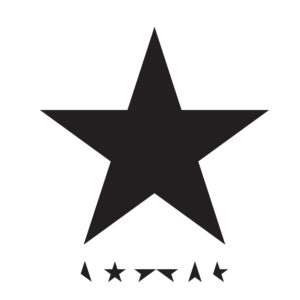
3. David Bowie – ★ (Blackstar) (2016)
Something was wrong. I wasn’t prepared for how immediately that fact would be confirmed, but it was clear upon first listen to Blackstar that something was not altogether right with David Bowie. That’s easy to say now, of course, since we know that Blackstar wound up as Bowie’s epitaph, released a scant two days before his death from liver cancer. And you have no reason to take my word that I knew it. I had notes from my first listening session on January 9, 2016 that back me up, but they were lost in the move.
We’re still not entirely sure how much Bowie intended Blackstar to be his final complete statement, either. His cancer was thought to be in remission during the making of its title cut and “Lazarus,” but Bowie’s longtime producer Tony Visconti sized him up before the recording was finished in November 2015 and reportedly told him, “You canny bastard. You’re writing a farewell album.” Bowie, Visconti claimed, simply laughed.
What Blackstar left still remains something of a puzzle. Bowie avoided the neatly ordered farewell, the accessible stanza that would serve as benevolent closure like Warren Zevon’s The Wind. Instead he called upon an obscure New York jazz combo whom he led through a series of visions as dissonant as they were disruptive. In the title track Bowie leads himself through a frenzied execution ritual and an uneasy ascendance through the galaxy that caused Major Tom so much trouble in the past. In “Lazarus” he faces a nervous self-appraisal, dropping his cell phone and dashing off raspy banter as if he’s struggling to regain his footing in conversation. In both tracks Mark Guilianas’ skittish drums and Donny McCaslin’s instrument-defining sax playing sound as if they’re running from an oncoming train.
After a career structured around role-playing, it’s Blackstar’s final two tracks that come closest to admitting what was about to happen. “Dollar Days” yearned for a home he knew he’d never see again, choking with the insistence, “Don’t believe for just one second I’m forgetting you.” And in “I Can’t Give Everything Away” you can’t tell if he’s talking about his secrets, his impending death, or the real person behind a lifetime of characters and personas. Then, after the song ends, you realize he’s done exactly that—and that for Bowie, there really wasn’t any other way to exit that would have felt more legitimate. For anyone. – Paul Pearson

2. Frank Ocean – Channel Orange (2012)
As the 1980s became the 1990s, we watched Beastie Boys get ahead of their immature thoughts and words, the puerile muck of misbehavior that marked their come-up. There were always clues that the Odd Future collective would eventually, hopefully do the same early in this 21st century. If there was ever an adult—or at least an old soul—to start to guide OF away from their primary nonsense, nihilism, and misanthropy, it was probably the oldest person to join them. The release of Frank Ocean’s first proper album was a turning point for the crew and for hip-hop in the 2010s, built on his growing rep as a producer within and beyond Odd Future as well as the promise of 2011’s Nostalgia, Ultra mixtape. Channel Orange found Ocean unafraid to ignore conventions of black machismo (“Forrest Gump”), to expose the barren existence of the upper class to which rappers had always aspired (“Sweet Life”), or to construct 10-minute suites drawing parallels between famous and anonymous exploited women across history (“Pyramids”). It’s a pastiche of psychedelic soul, minimalist millennial pop and, most importantly, enlightened and tortured coming-of-age versions of the fuck-you rap stock traded in by Tyler, the Creator and Frank’s OF contemporaries. – Adam Blyweiss
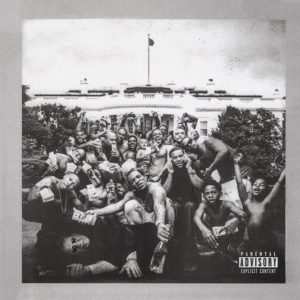
1. Kendrick Lamar – To Pimp a Butterfly (2015)
We can’t consider this record without first considering Kanye. This was his decade to lose, after all, starting off the ten-year cycle with the 2010 release of My Beautiful Dark Twisted Fantasy, an absolutely spellbinding and perfect record. That album blew the doors off of the rap game in a way that we did not collectively realize until some years later when it became apparent that rap was not only the new rock ‘n’ roll, it was the new psychedelia, the new prog, the new pop, the new culture of the masses and the new cultural wunderkind. Rap had been important before, yes, from the 70s forward, but this was something different, like the Sgt. Peppers’ of the genre, not its best album but the one that seemed to make everything stick, seemingly forever.
We know how Kanye’s story progressed over the decade. But in the wake of that revolution in art, culture, and rap emerged Kendrick Lamar, Compton’s newest chosen son birthed from that holy city of hip-hop. His tapes showed early genius; his debut is a perfect rap record. But what do you do after you’ve delivered a perfect rap record? You go beyond. To Pimp A Butterfly is a hip-hop album, yes, but it’s hip-hop in the same spirit as My Beautiful Dark Twisted Fantasy before it, and the perfect Stankonia before that, and Electric Circus and Illmatic and Ready to Die and Enter the 36 Chambers and more. It is in turns a jazz record, a psychedelic record, a prog record, a spoken-word poetry record, a rock record, a blues record, an R&B record. There are musical nods from Marvin Gaye to the Isley Brothers to Jimi Hendrix to Herbie Hancock to Miles Davis to Prince. It is a cyclone and compendium of Black genius in musical arts in the 20th and 21st century, seeing fit to marry all moments together.
But rap is at the center of it all, an earnest and profound love of the form. The album is a loose concept record focused around Kendrick’s failed attempt to recite a poem, a poem broken up by songs, jubilant songs, a poem that becomes an interview with Tupac, another of the great sons of rap and 20th century art. It’s been read that Kendrick’s usage of archival interview audio of Tupac reads as him placing himself prematurely in the pantheon, but it doesn’t feel that way on the record. It is an act of love, of grace, of worship, not of a man but of a legacy of art. On good kid, m.A.A.d. city, Kendrick worked with Dr. Dre, a living legend. Here, he dialogues with a fallen idol, an idol whose image has transcended rap and penetrated a purer image of 20th century art in the same way Jimi Hendrix and Prince have. Much like the Isley Brothers sample and the jazz licks provided by Flying Lotus, Kamasi Washington, Thundercat, Bilal, and a whole host of other greats mixed so thoughtfully that the supergroup elements of the work go unremarked, subsumed toward a greater and more worshipful whole. To Pimp A Butterfly sits comfortably not with other records of its genre, not only at least, but in the same fabled pantheon as Kind of Blue, Purple Rain, Electric Ladyland, What’s Going On and more, not just of Black art but of all art. It’s not just the best album of the decade (which it is, easily, obviously): It’s one of the very best records ever made. – Langdon Hickman
Support our Site—Subscribe to Our Patreon: Become one of our monthly patrons and help support an independent media resource while gaining access to exclusive content, shirts, playlists, mixtapes and more.


I can’t believe “This is Happening” came out ten years ago. I’m definitely going to have to re-visit some of the albums on this list! ❤️
This is a decent list, but KSG should be on here and Yeezus is NOT better than The Money Store. That is such a shameful take, TMS has better production and better lyricism. Yeezus is literally trying to follow on suit on a wave DG started.